Article
Classic
The simplest and most common kitchen apron from white tiles in a traditional style.
If earlier square tiles with straight grouting were popular, now a rectangular shape with staggered masonry is more common.
For a classic apron, it is not necessary to use white tiles. The finish looks organically a tone lower than the flooring.
This technique emphasizes the whiteness of the furniture and ceiling.
The same simple kitchen apron, but already in modern interior made with colored tiles.
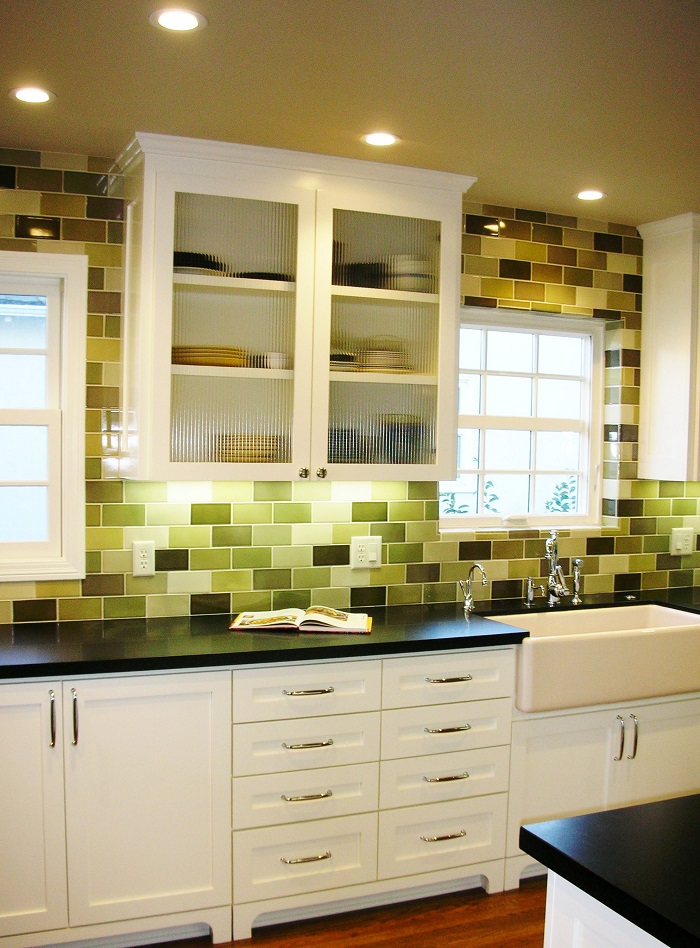
White and black alternate with two shades of light green, creating a special atmosphere of comfort. No wonder psychologists believe green color one of the most favorable for the design of residential premises.
In this case, the traditional apron is made of tiles using a pattern of overlapping regular circles.
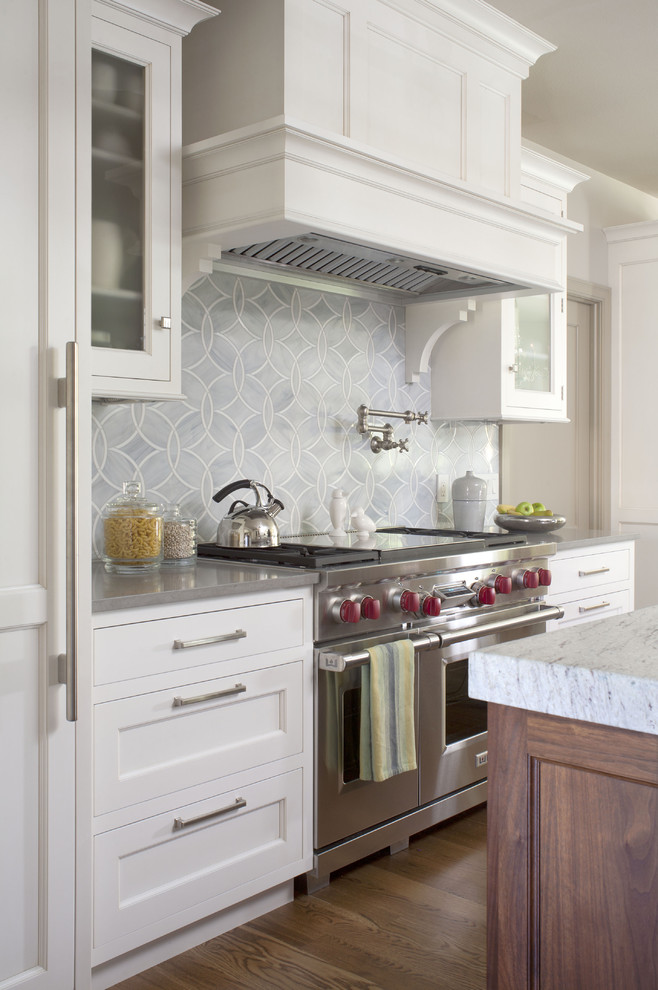
On the one hand, the principles of classicism in the use of simple forms are not violated, on the other hand, the imposition creates a beautiful pattern.
The same approach, but with a more complex ornament.
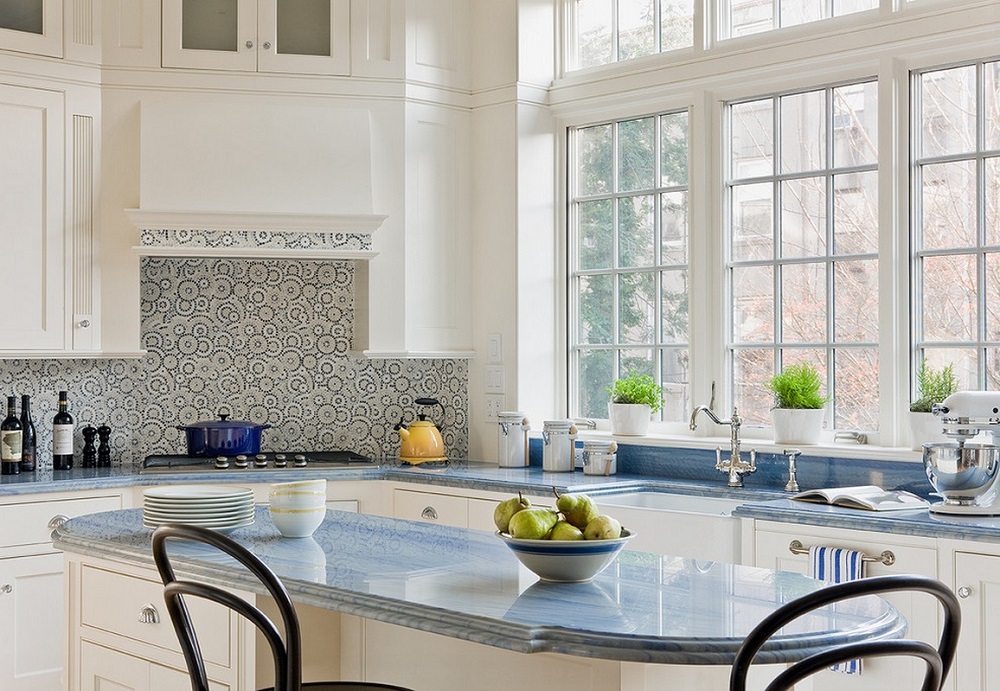
Aged color scheme furniture and the main plane of the backsplash are “enlivened” by a small area in blue tones near the sink, which is repeated in the polished tabletops and cabinets.
This photo shows a classic white tile finish with two types of surface finishes.
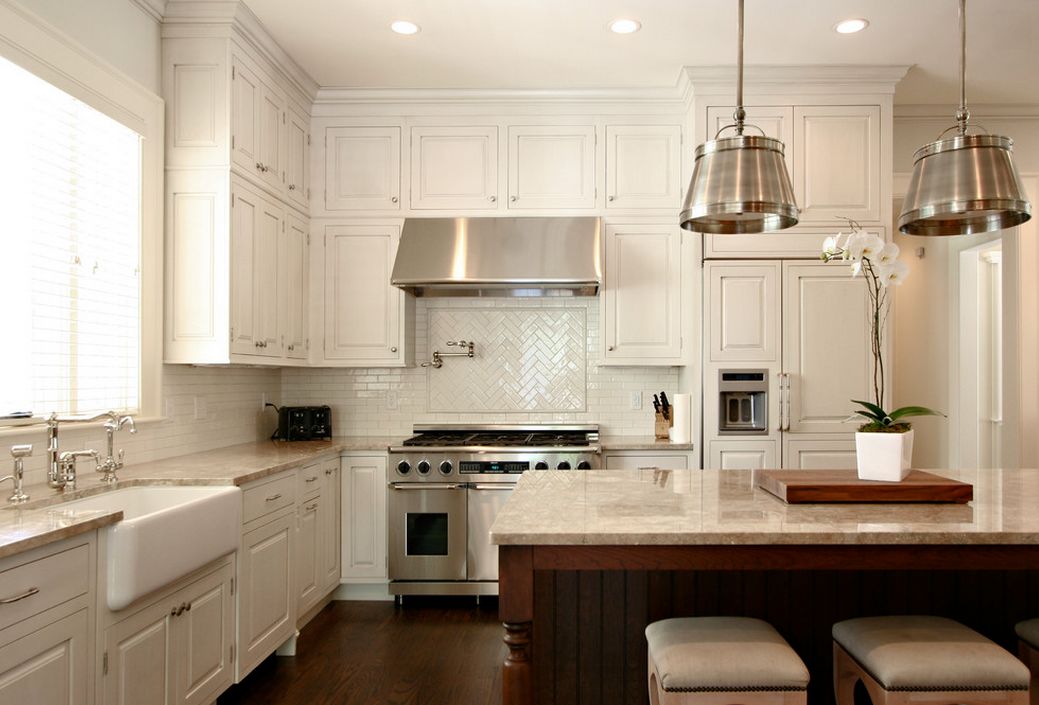
The zone of a plate and an extract is selected. And although the same type of material is used, this approach visually zones the space, making it more attractive.
Another option classical style, but with the use of several decorative techniques.
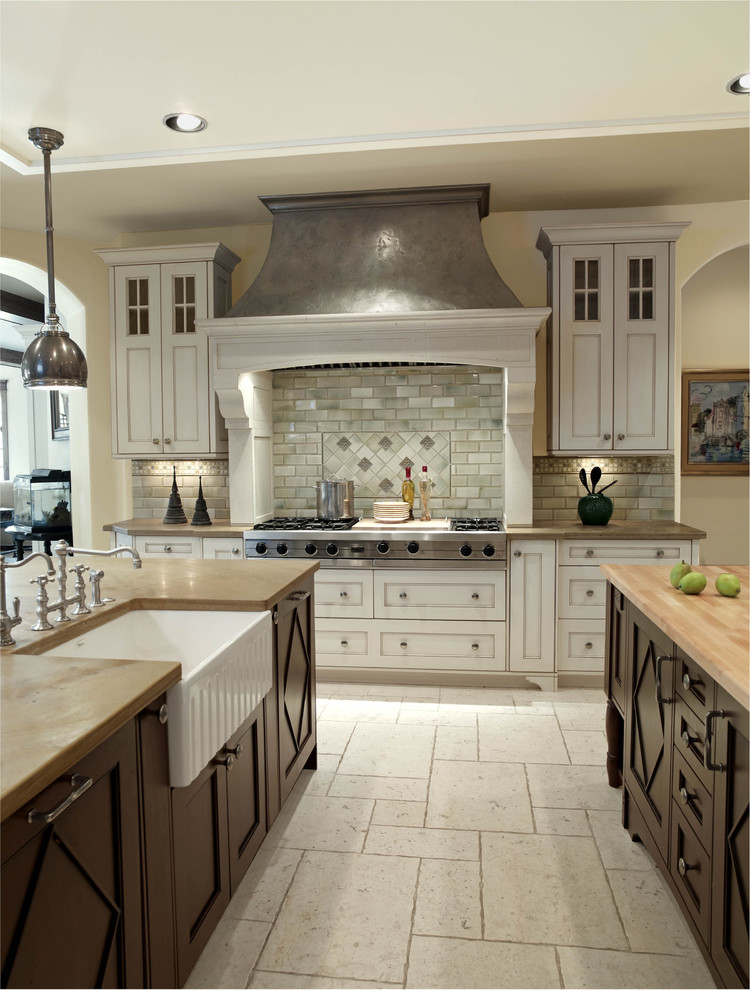
In addition to horizontal mounting, a square with a vertical diagonal is used. The central insert, designed in the style of a panel, a border and an imitation of a fireplace portal in the area of the stove and hood, allow us to talk about the design approach.
The traditional kitchen apron is organically combined with the finishing of the hood area with tiles with the texture of chipped stone.
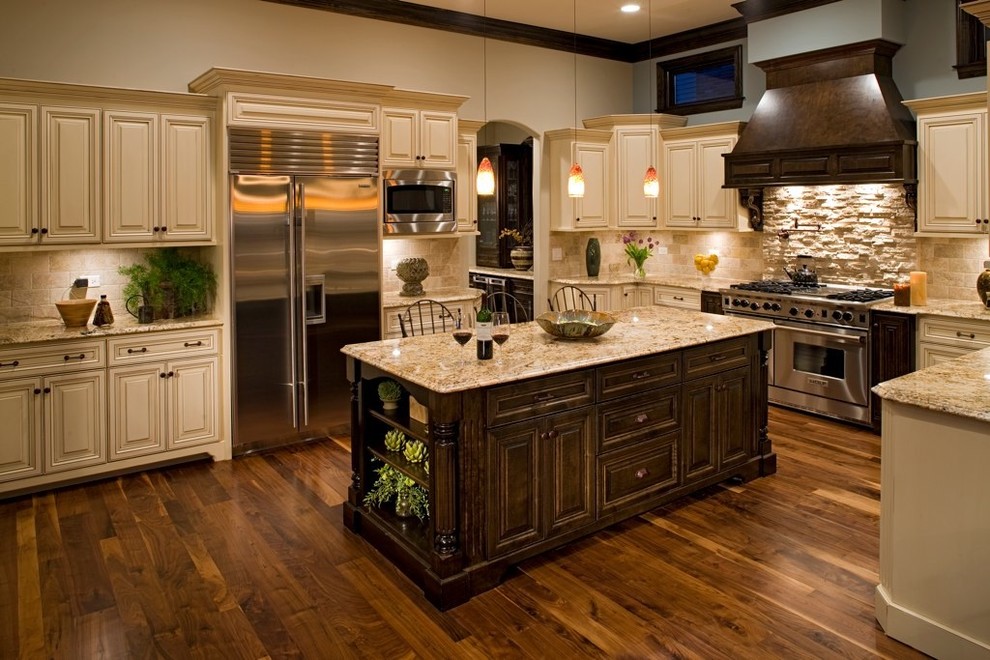
And although the care of such a surface is much more difficult, but its decorative qualities compensate for this. A great combination of texture and color finishes with the style of the interior.
Classic kitchen interior using mosaic tiles.

A beautifully designed window opening and wall decoration with silver mosaics with absolutely correct masonry geometry create a harmony of symmetry and order.
Classic kitchen with an unconventional backsplash.
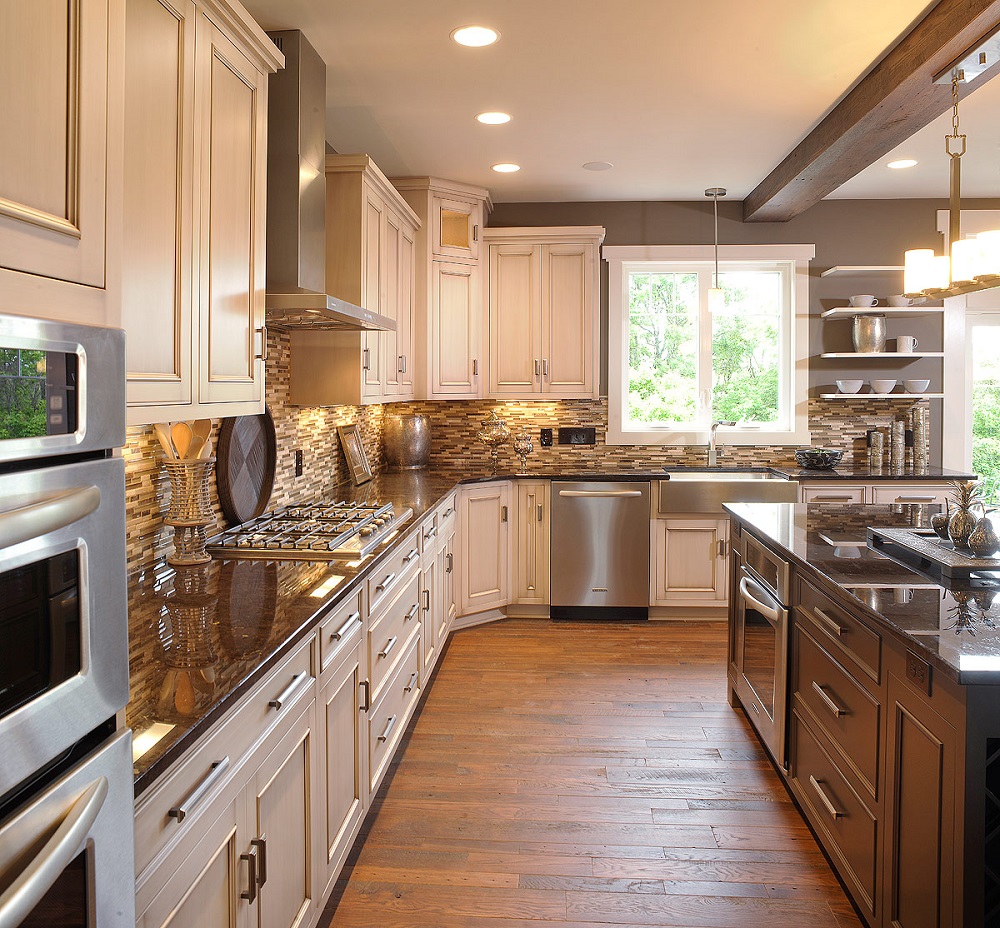
An example of how you can use a mosaic that, with its variegated color, resembles the texture of natural sandstone, which perfectly matches the color of the parquet board.
Modern
Modern interpretation based on "French country".

White furniture in the style of "Provence", decorative dishes and accessories, figured tiles and bright colors of dishes - good mood on every day.
Pictured is a kitchen from Santa Barbara (literally).
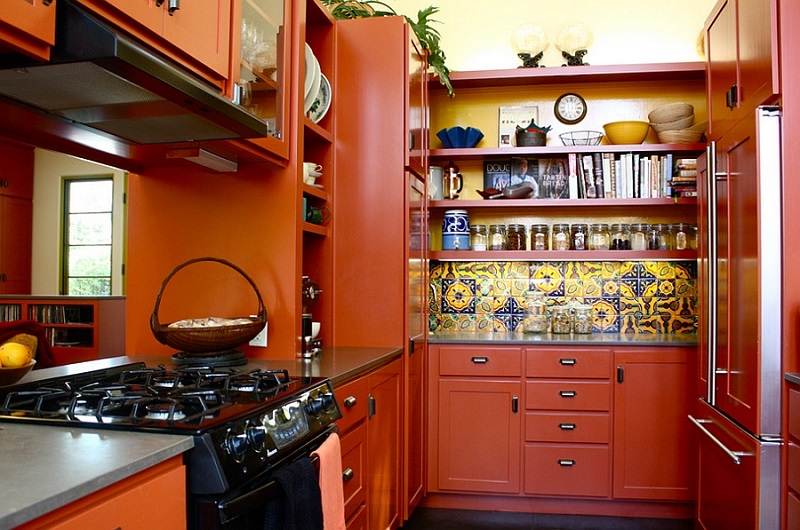
It's not even an apron over the work surface. This is a piece of applied art.
A small kitchen with a window into the living room is unusual in everything, in every detail.
This example uses a mosaic tile.
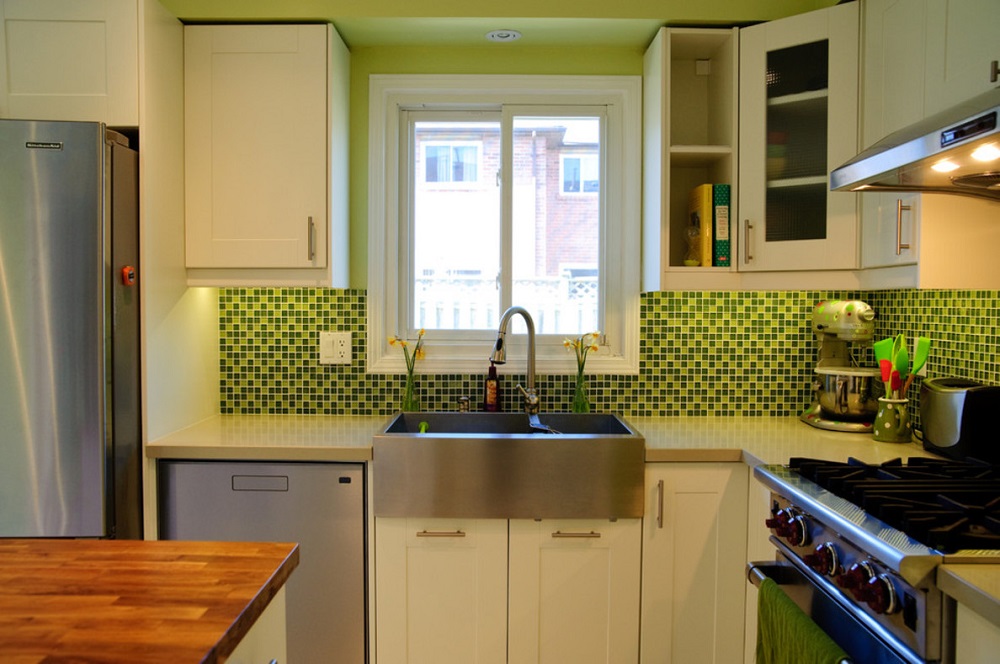
A harmonious combination of wall decoration and modern mosaics in two shades of green. Even the spines of the recipe books and kitchen towel are in the same palette.
Modern style
As an example of modern minimalism, you can bring a kitchen apron in the next photo.
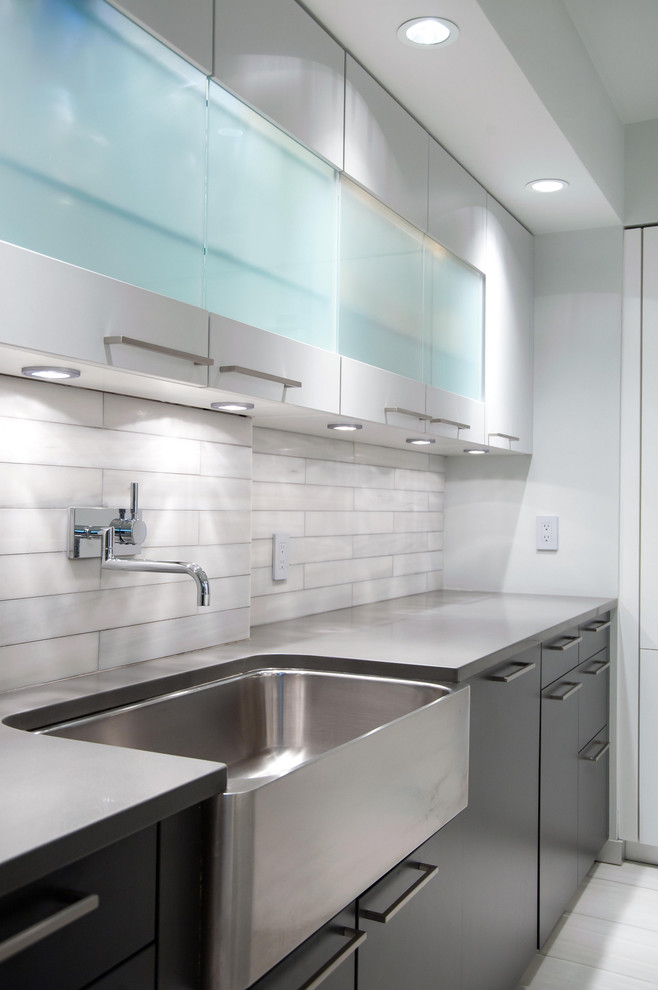
Maximum simplicity in everything. Finishing above the worktop is made of ceramic parquet format tiles. This solution visually “lengthens” the wall of a small-sized kitchen in a city apartment.
Everything in this interior is also simple and functional.
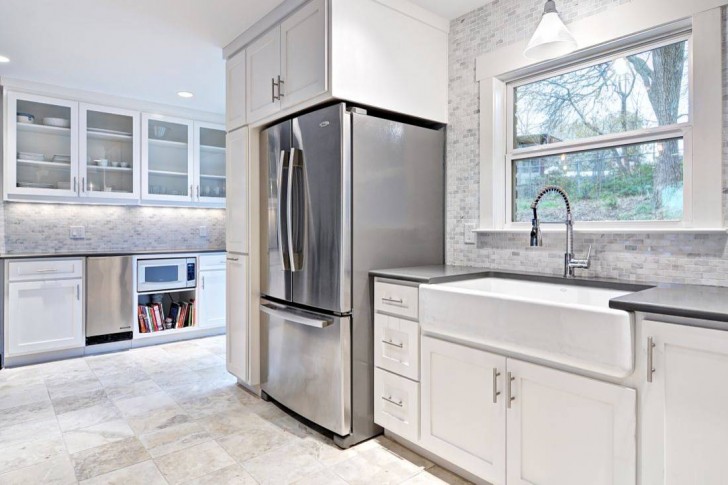
Large kitchen space country house does not require the use of large forms. On the contrary, a small and non-uniform in color mosaic tile pattern makes the room more compact, while maintaining the unity of the style of decoration, furniture and equipment.
mediterranean style
This style is characterized original design apron using patterned tiles.
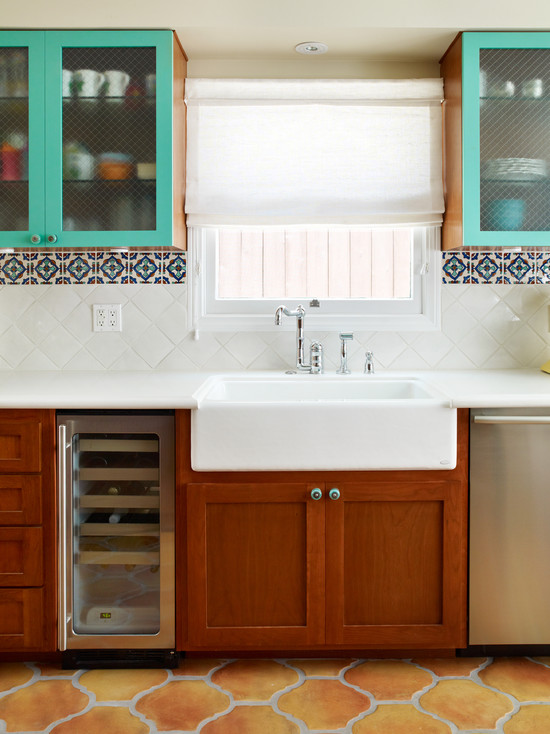
The working area of the sink is highlighted with white tiles with diagonal laying, and the rest of the surface is finished with tiles typical of the Spanish design tradition.
Another variation of this vibrant style.

In this case, the inserts in the flooring are designed in the same manner as the backsplash tiles. And the light furniture along the perimeter and the dark island are connected together by countertops with a light texture of natural stone, which “shine” to match the wall decoration.
Spanish rustic.
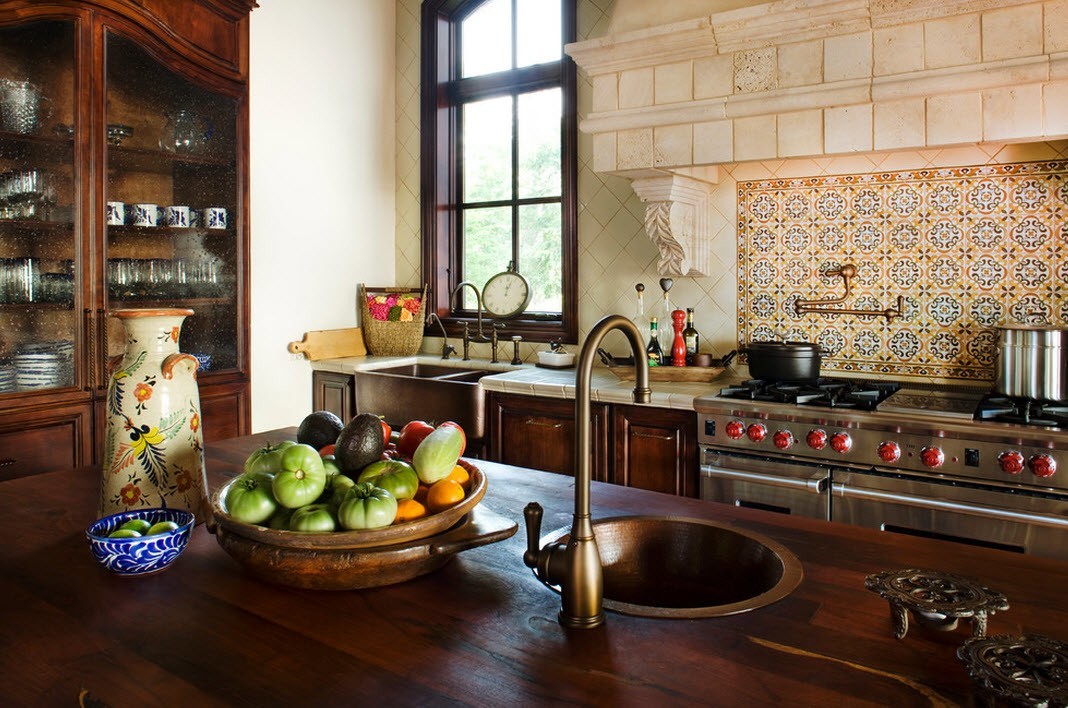
Heavy dark cherry furniture, a bronze island sink faucet and window sink faucet, matching kitchen clock and hot dish rack are all set off by cream tiling on the walls. And the center of the composition is a kitchen apron under the fireplace portal that hides the hood.
Finally, one more example.
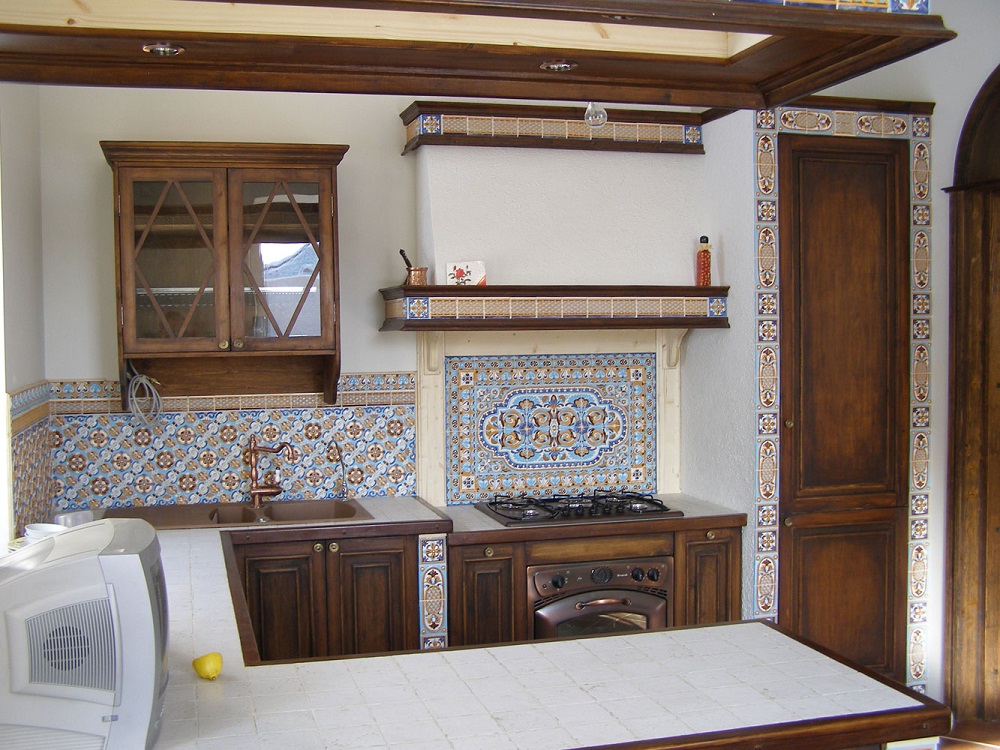
These are tiles. The splendor of tiles self made and the unique individuality of the interior in the "retro" style - wood, bronze and ceramics.
You can argue for as long as you like about what material is best for decorating a kitchen apron. However, no one doubts the need for this attribute, which is also a very effective design element.
Concerning ceramic tiles, then it has been holding a leading position among many other decorative materials for a long time. And we can assume that nothing will change in the near future. And this means that when decorating modern kitchen aprons, any creative ideas are still acceptable, including even the most incredible ones.
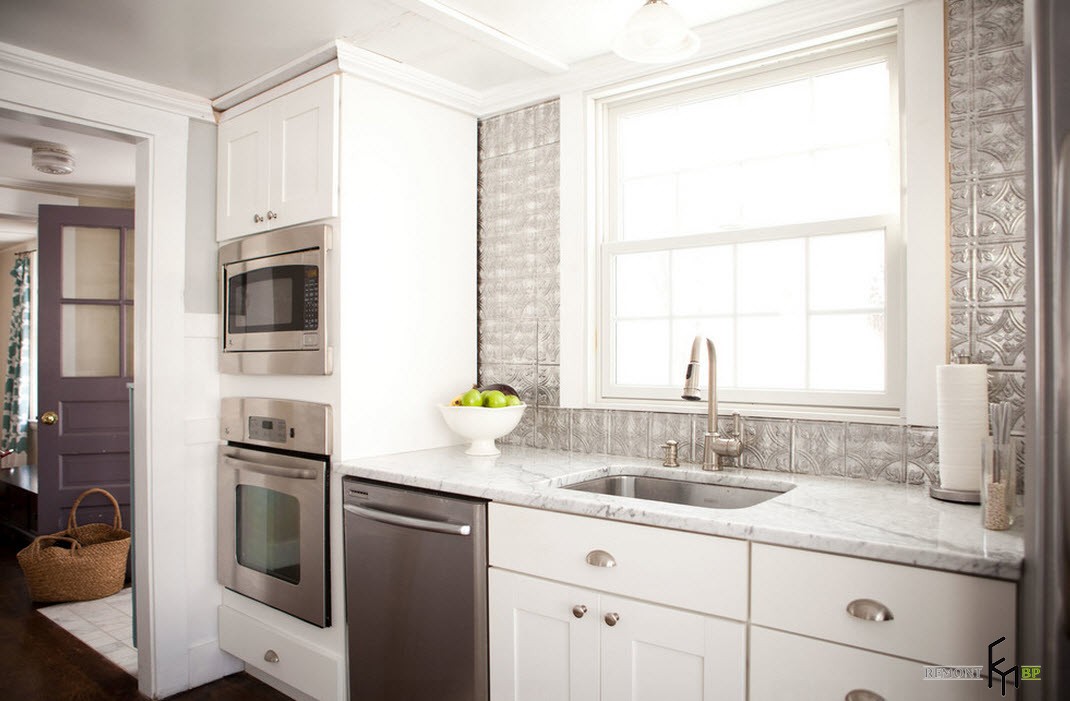
Five "fat" pluses of using tiles in the cooking area
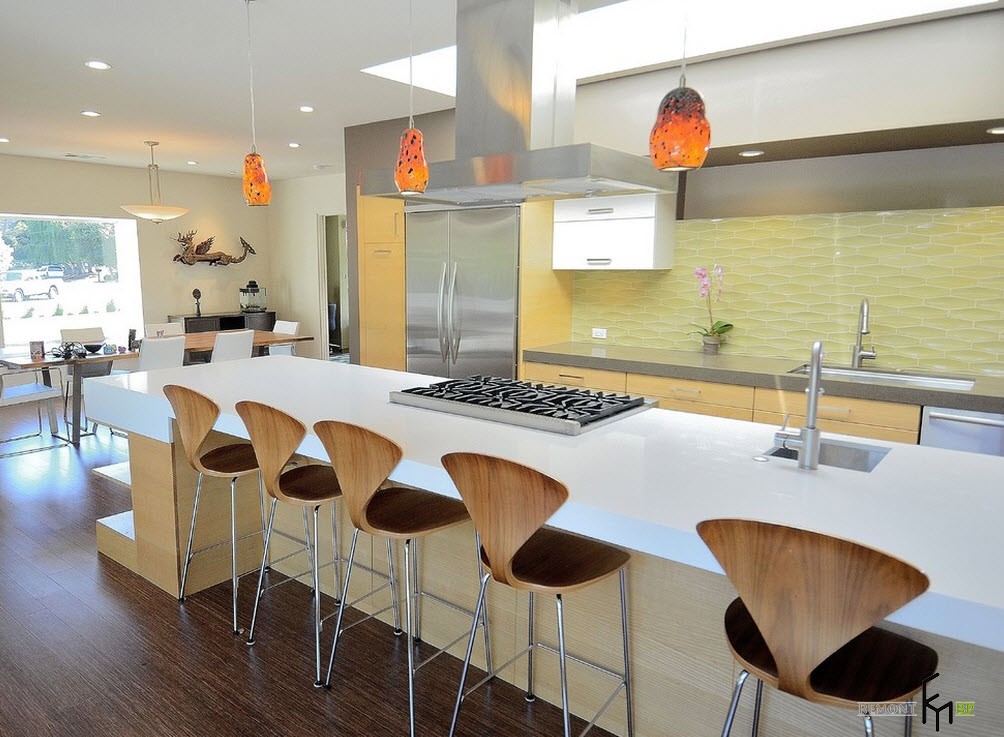
The only drawback of this option for designing the working area of \u200b\u200bthe kitchen is the difficulty of laying tiles. Self-manufacturing such an apron will require certain skills from homeowners, and, in addition, it will take a lot of time.
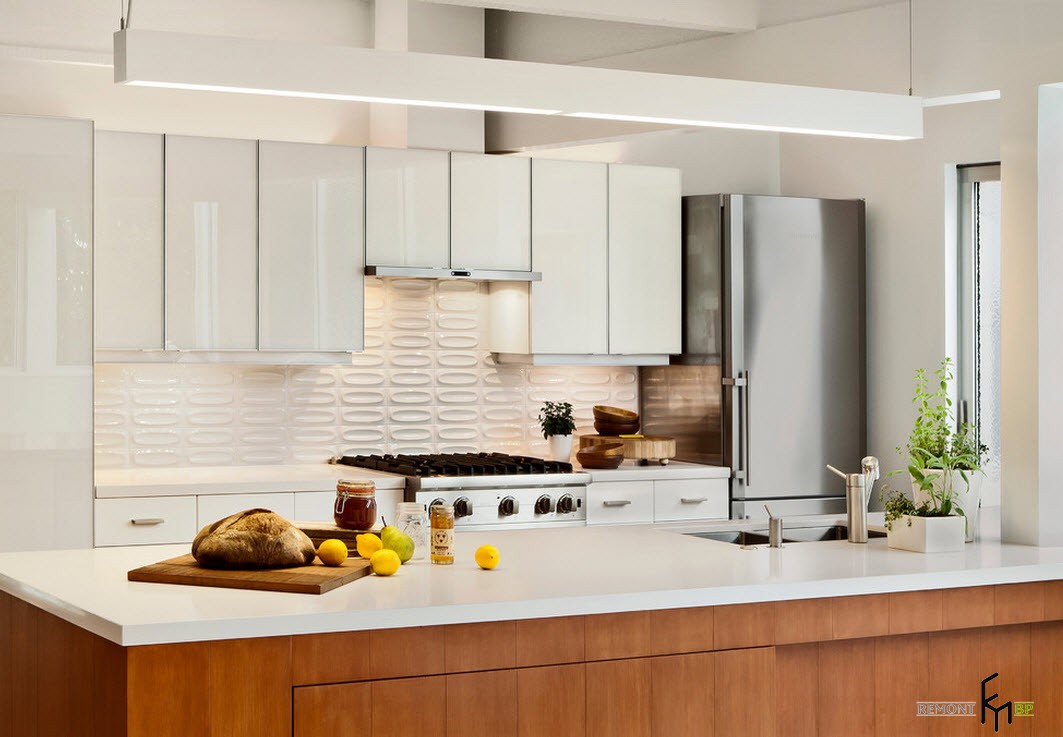
What are they - modern tile kitchen aprons?
When choosing ceramic tiles, there are now many options. Someone prefers a standard tile with a smooth surface. Other homeowners prefer matte tiles.
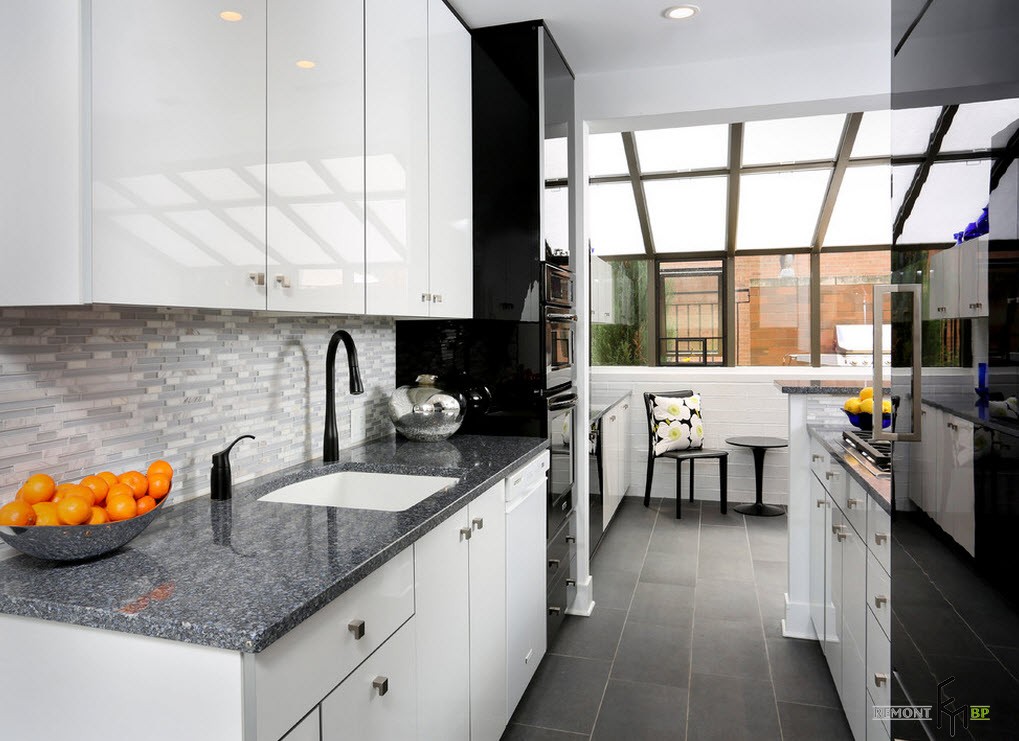
In addition, other interesting varieties of this finishing material can be found on sale:
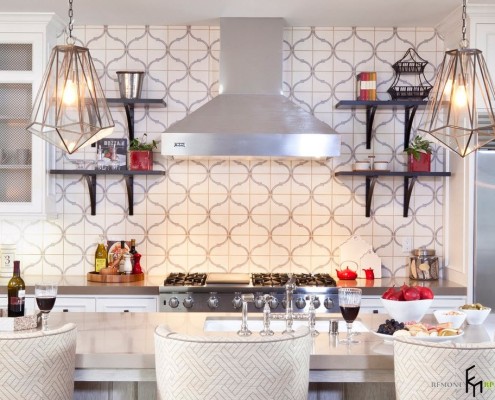
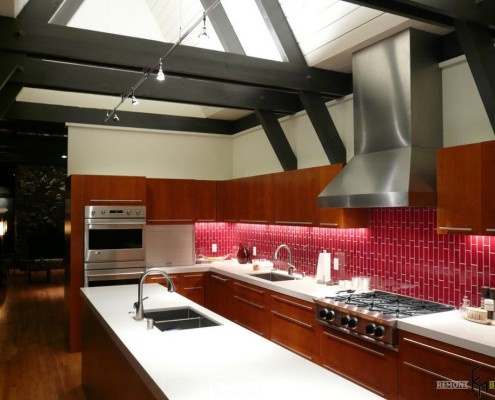
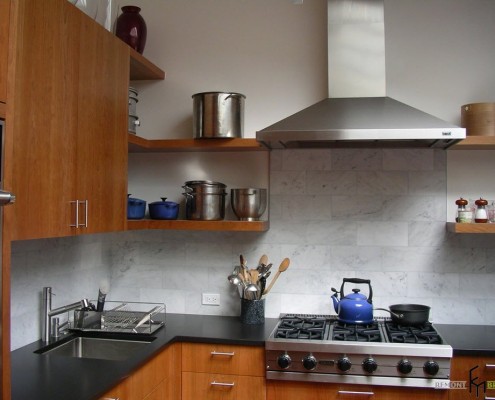
The size of the kitchen apron depends on the design features of the kitchen and on the type of tile chosen. Standard size the protective strip is 60-80 cm. An additional 10-15 cm will help to avoid ugly gaps between the working surface of the table and the finishing area.
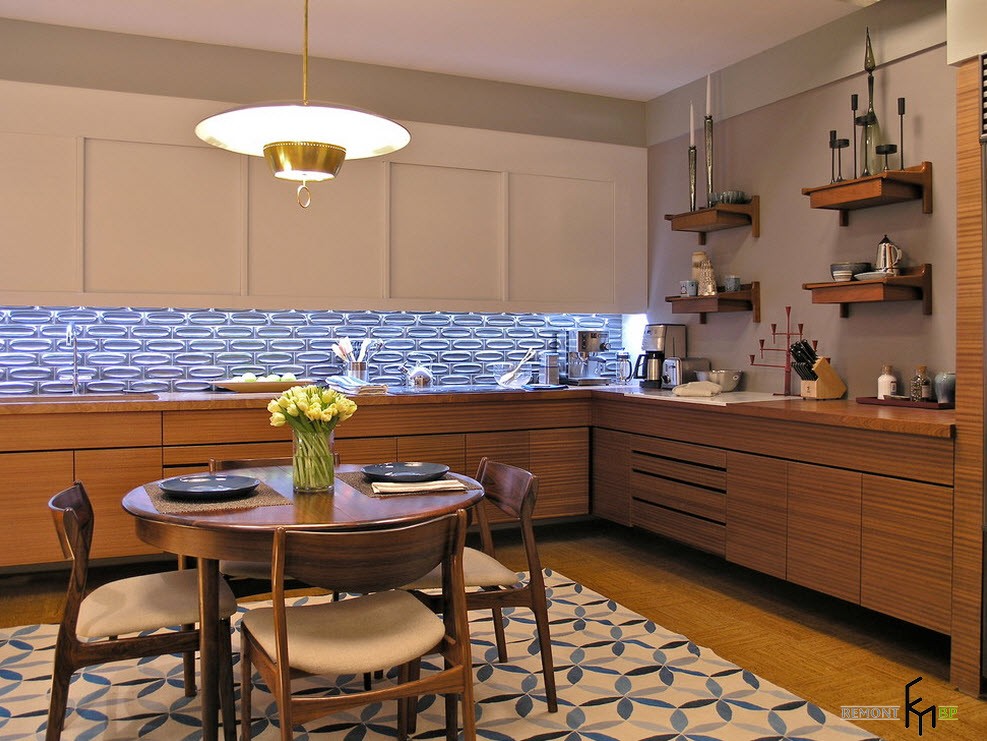
Seven options for designing the working area
1. The kitchen apron is laid out in the form of a square or rectangle and occupies a relatively small space. This way of laying many homeowners seems too simple and boring. This is not entirely true, since even a plain material can perfectly “fit” into any kitchen interior, making it more expressive and effective.
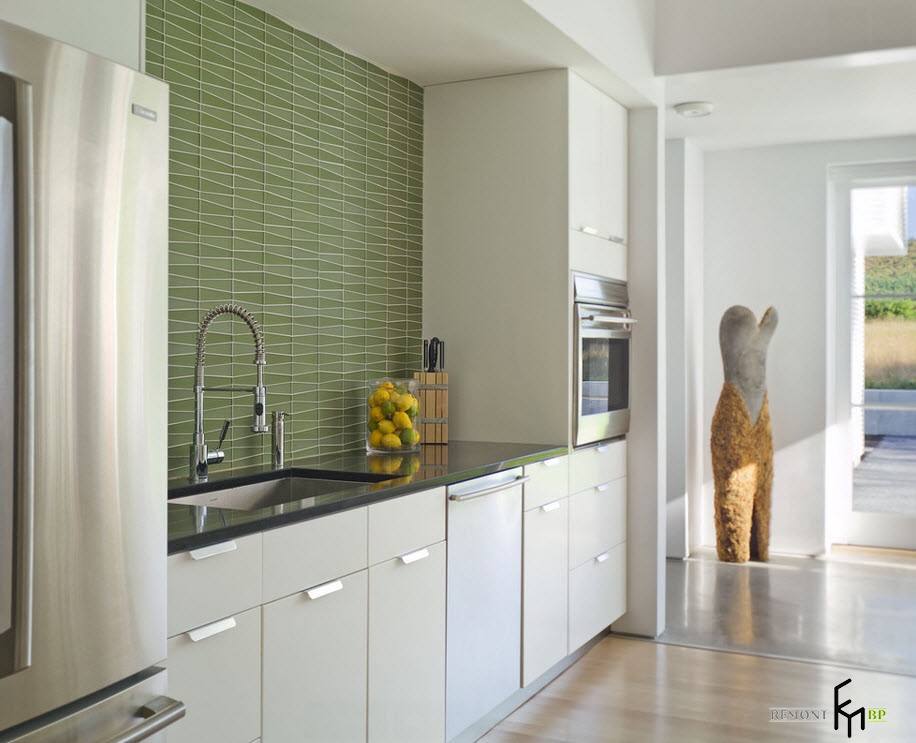
In this case, the tile will look great in several cases:
- if the tile is matched to the tone of the walls, furniture and kitchen accessories;
- if ceramics contrast with the main surfaces of the kitchen.
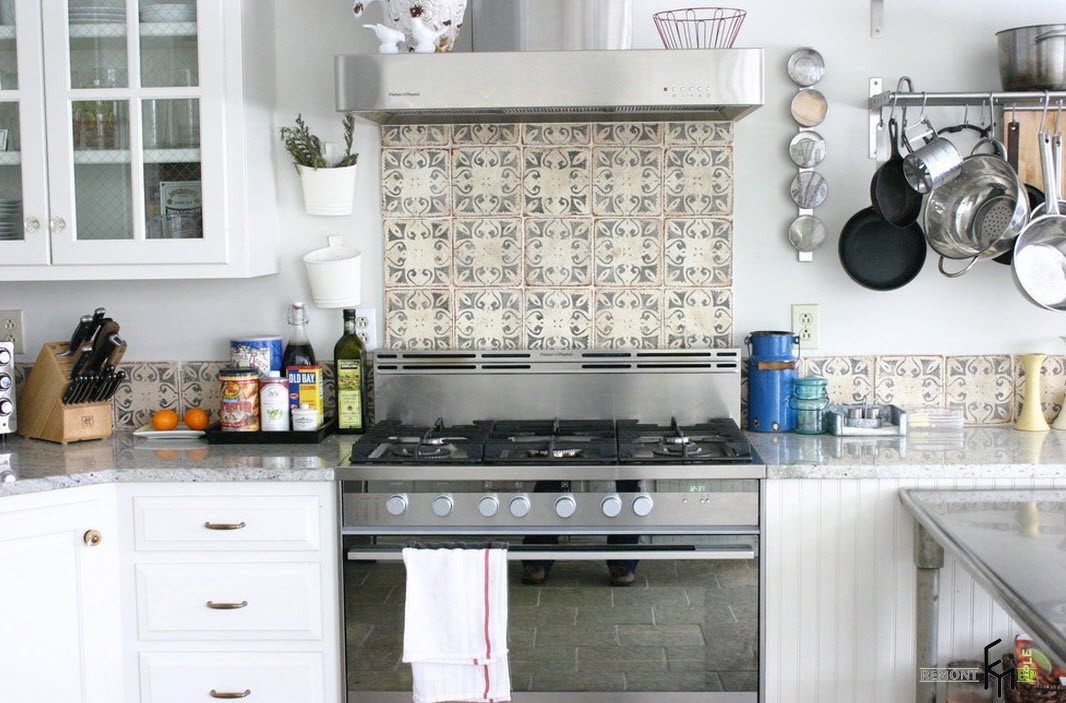
2. Tiled finish occupies the entire free part of the wall above the working area (stove, sink and table surface). This option is certainly the most practical, as it allows you to keep the entire most frequently used area of \u200b\u200bthe kitchen clean. To bring the walls in order, wipe them daily with a damp cloth, and once a week carry out a more thorough cleaning using special detergents. At the same time, the kitchen apron will always look impeccable.

3. Wall decoration resembles standard brickwork . To do this, tiles of the most incredible colors can be used - from standard brownish shades to bright and defiant colors. The sizes of ceramic tiles in this case can be very different.
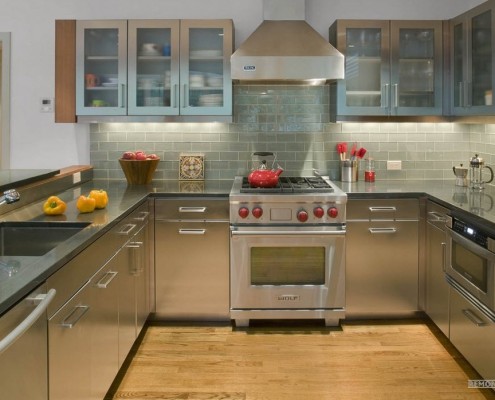
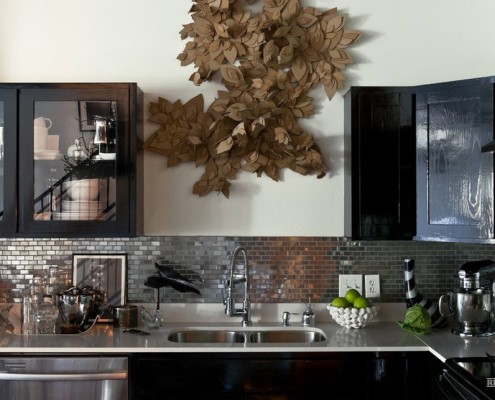
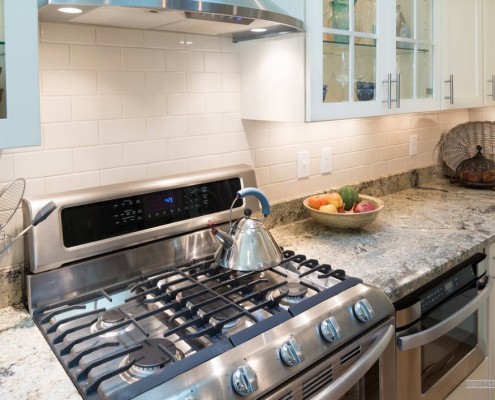
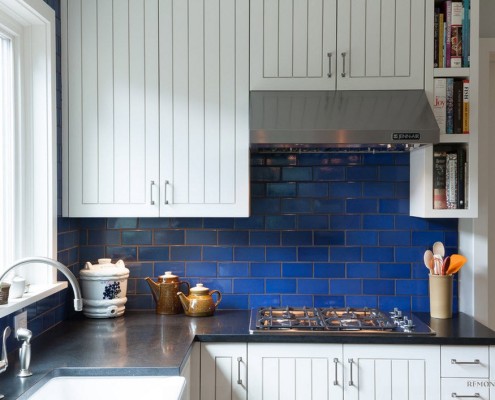
A very effective technique is the use of a similar material for finishing the working surface of the table adjacent to the area of the kitchen apron. This design option makes the interior complete and very stylish.
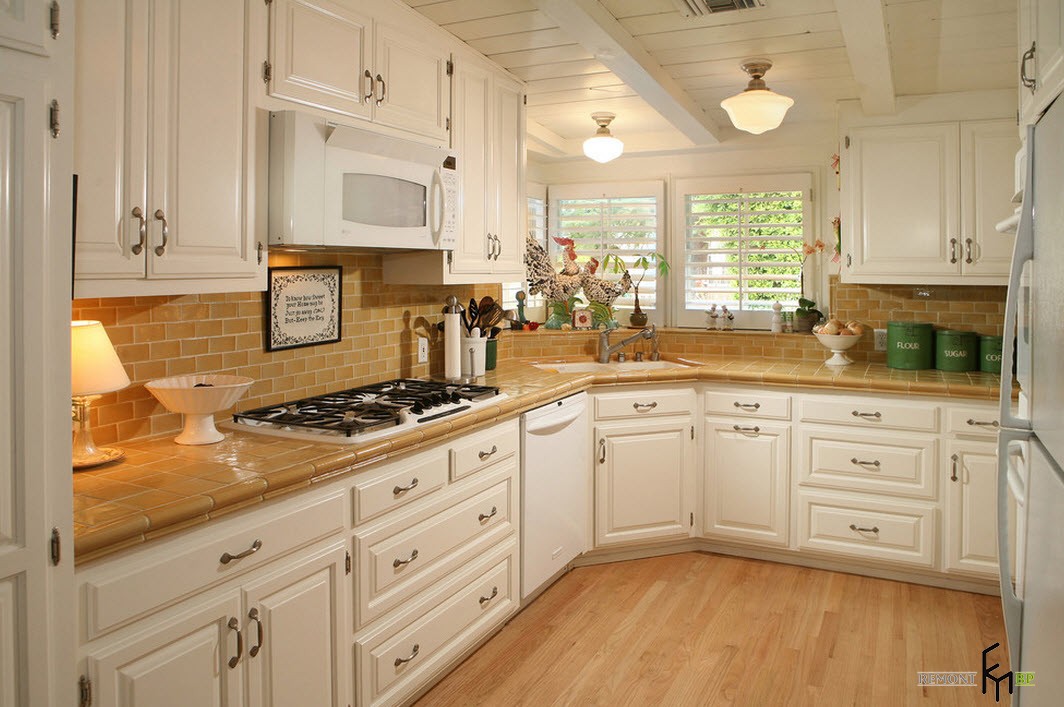
4. When decorating the walls, large tiles of several types are used. . This combined option makes it possible to use several colors in the interior at once. This technique, firstly, will revive a rather boring kitchen space. Secondly, such a method will enhance the effect of color spots already present in the kitchen, emphasize all the most advantageous moments in the design of the space.
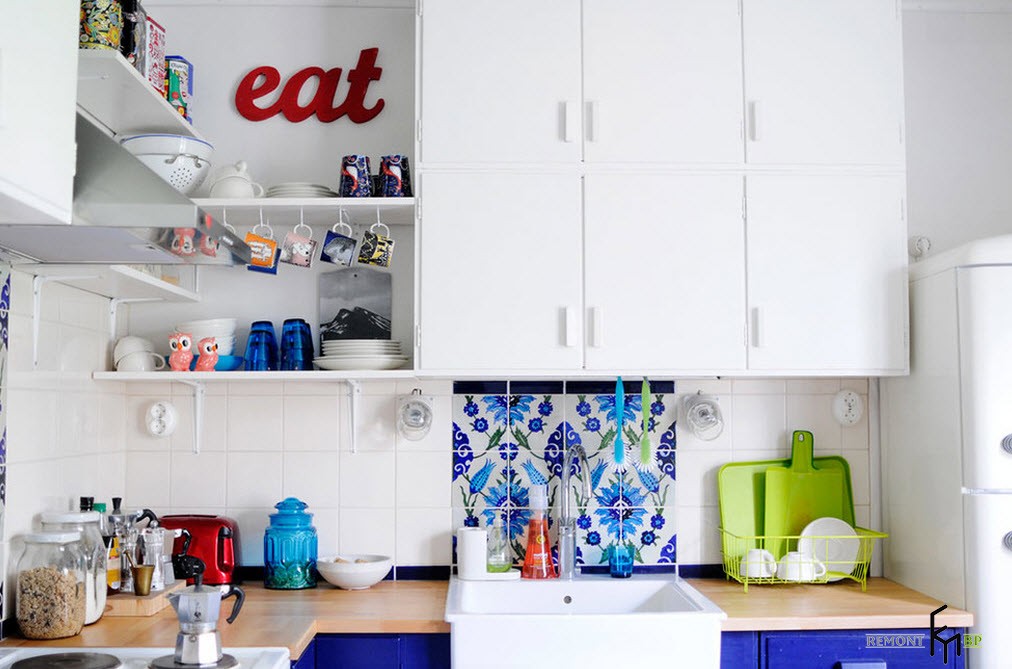
5. Ceramic tiles are laid in a mosaic of various sizes and shapes. From this material, you can lay out all kinds of decorative panels depicting mouth-watering fruits and antique kitchen utensils.
![]()
With a similar method of wall decoration, tiles are often used. various kinds and forms. This option is quite laborious, however, it does not require perfect alignment of the wall surface and allows you to use all the purchased material without residue.

6. The laid tile imitates a honeycomb. This way of finishing allows you to make the interior more original and exotic. For this design option for a kitchen apron, most often, tiles of the same color are selected.
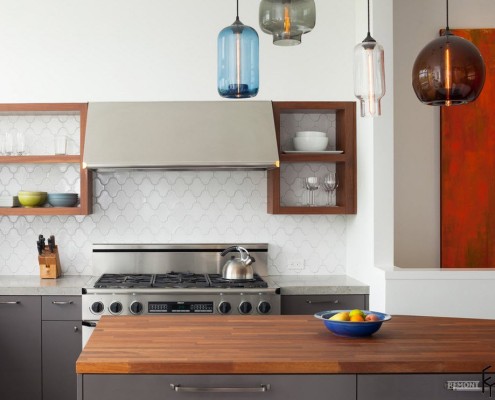
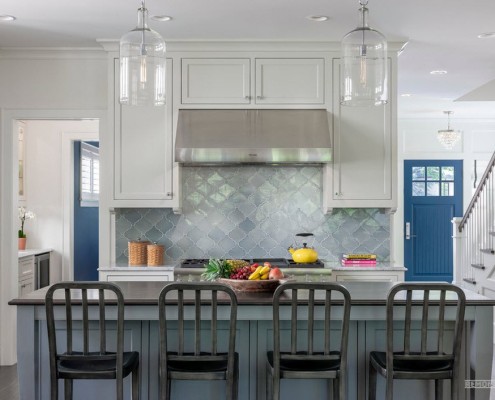
7. Laying tiles is done diagonally or in the form vertical stripes. Such a design system for a kitchen apron will allow you to visually adjust the space: even out the proportions or increase the area.


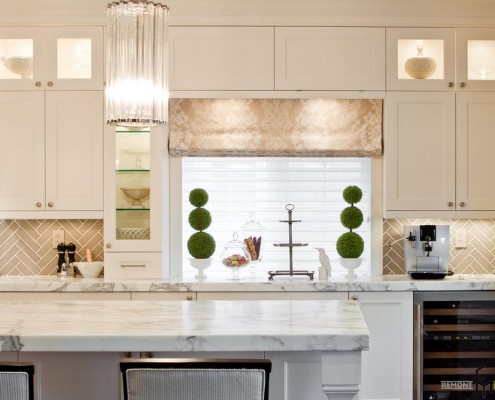
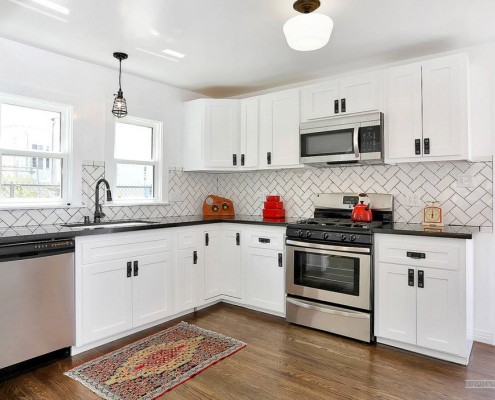
Whatever style your kitchen is decorated in, the resulting design effect can always be enhanced with the right choice of ceramic tiles. A kitchen apron is not only a kind of protective strip, but also a great way to decorate a space.


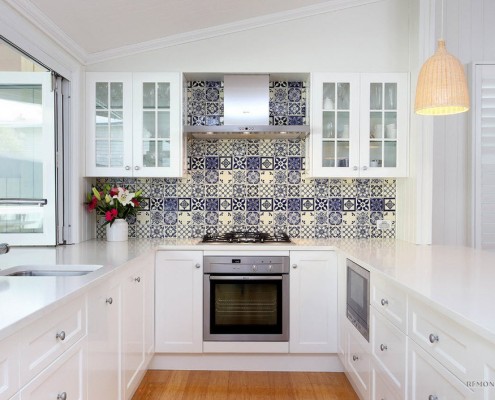
Do not miss this unique opportunity to make your life brighter and more comfortable. Try, create, and you will see how your life will change!
Main functions:
- Protective. The tile protects the wall from exposure to hot temperatures, dirt, water, detergents;
- Facilitating cleaning. Kitchen tiles are easy to care for - easy to clean without streaks;
- Decorative. Properly matched in color, size, style to the kitchen set, qualitatively laid with your own hands or by a master, a kitchen apron made of tiles pleases the eye, makes you want to spend time at the table.
Tiles for the kitchen on the apron
ceramic
Pros :
- Durability. With proper installation, it will last longer than a kitchen set;
- Strength. Forgive their owners careless handling. The tile will not crack high temperature and mechanical influences;
- Diversity. You can choose colors, textures, panels for a very long time. But the tile allows you to combine colors and shapes, creating an individual style;
- Ease of maintenance. Not afraid of aggressive detergents.
Minuses :
- Difficulty of installation. Wall panels, for example, from MDF, chipboard are easy to assemble with your own hands. Smooth laying of tiles requires a lot of labor and skills;
- Installation cost. Masters take a lot of money for their work. When calculating the cost of ceramic tiles, add the same amount for work and consumables (glue, primer, grout, spatulas ...);
- Wall preparation. It also requires effort and even walls, otherwise after a while ceramic tiles from decor will turn into a problem;
- The complexity of the repair. If you want to change the wall decoration, removing the tiles is laborious.
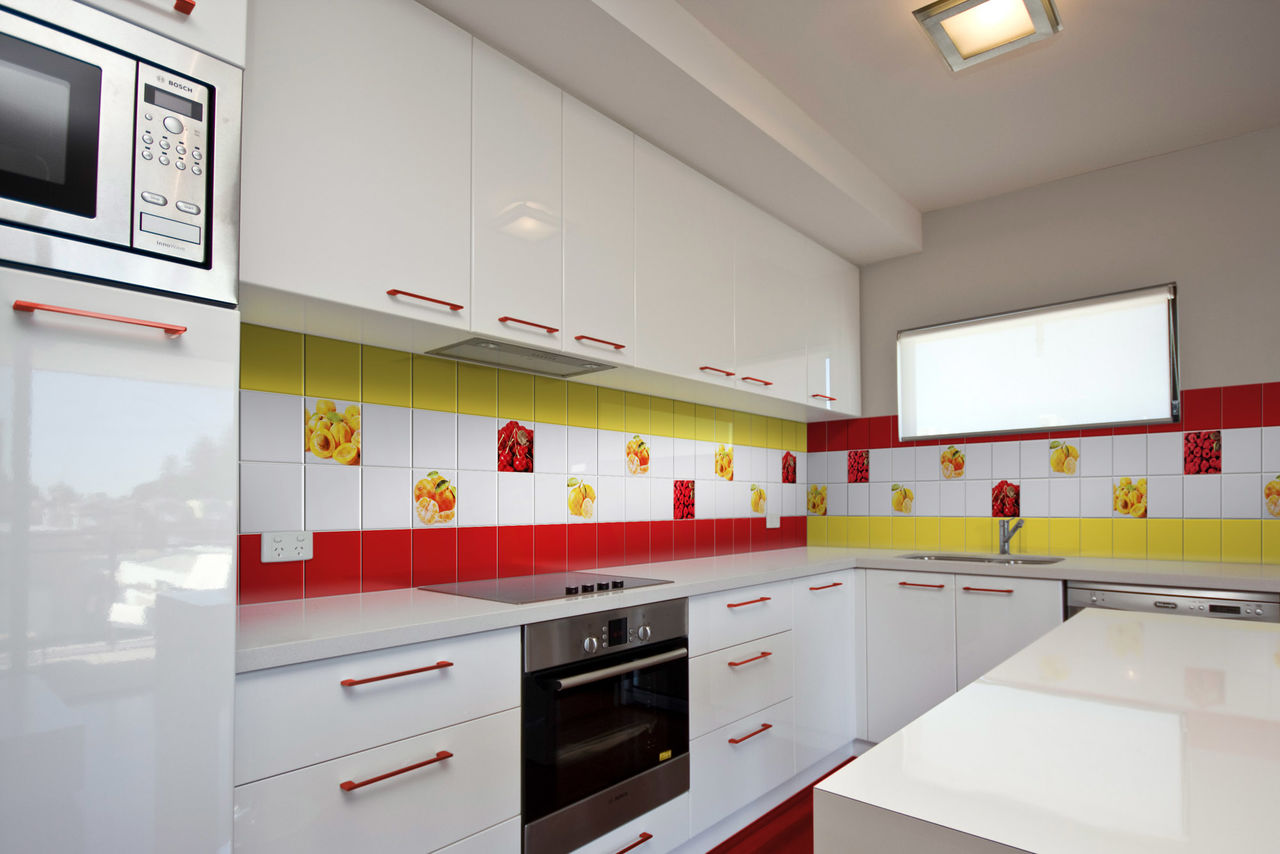
Bright kitchen apron made of ceramic tiles. Combination with photo tiles.
Ceramic tiles for the kitchen must be glazed - then the dirt is easily removed. A complex texture looks richer, but the functionality disappears. Cleaning becomes difficult.
photo tiles
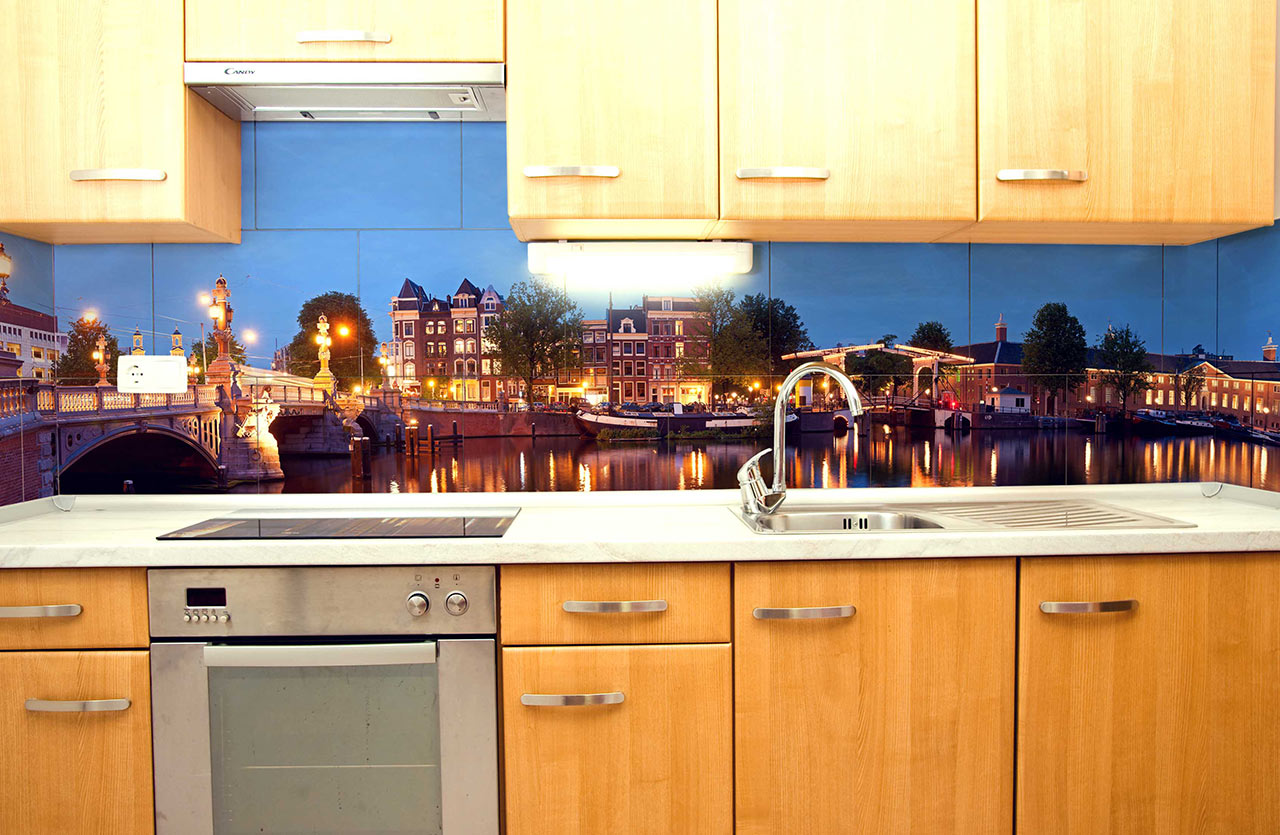
Pros :
- Original, extravagant design. Your kitchen apron with a printed image will look very unusual;
- Saturated tile colors that are not available when choosing a different decor;
- Individuality. You can order a photo of your home, family, animals, nature, sea, sky.
Minuses :
- Preparing the walls, laying - you will encounter difficulties when working with your own hands or with the high cost of the services of a master. Don't forget about Additional materials;
- Care is more difficult than for a ceramic kitchen apron. Not resistant to some strong cleaners and hard sponges. Ideal for photo tiles - water, soap and a soft cloth;
- The risk that over time the image on the tile will become covered with a network of cracks will fade.
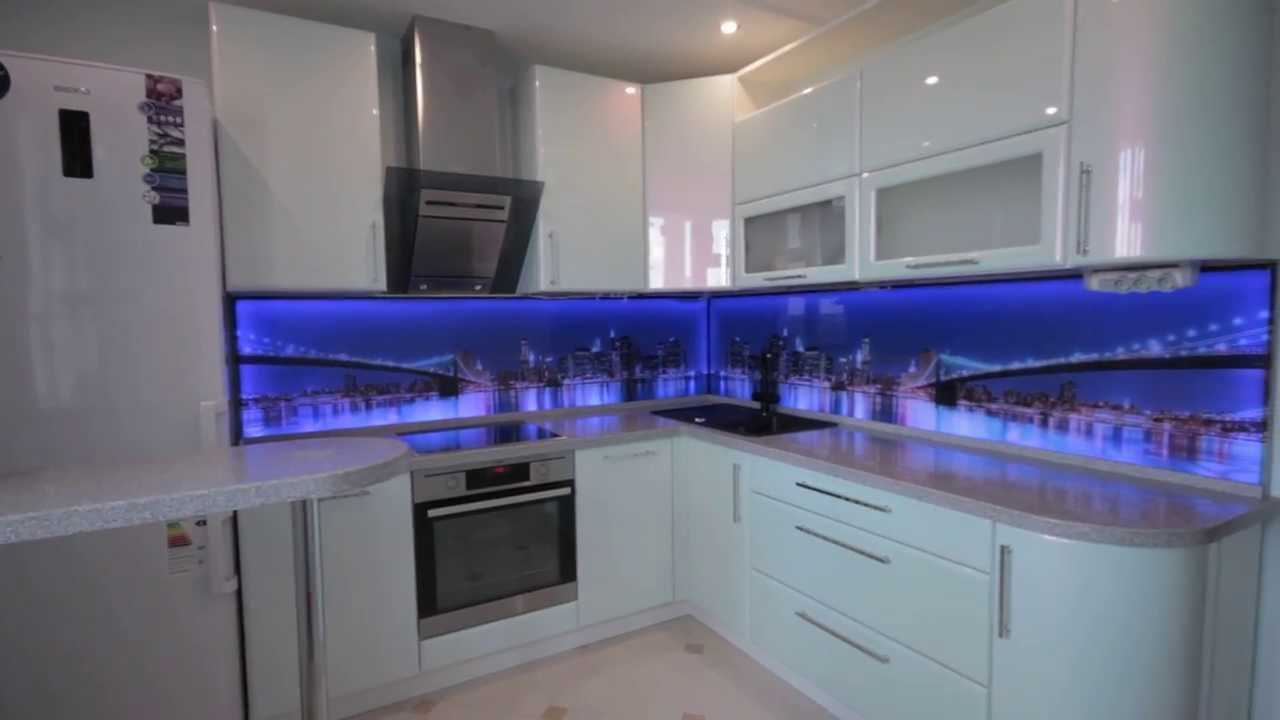
A factory printed kitchen apron will last longer than a custom printed photo.
Mosaic
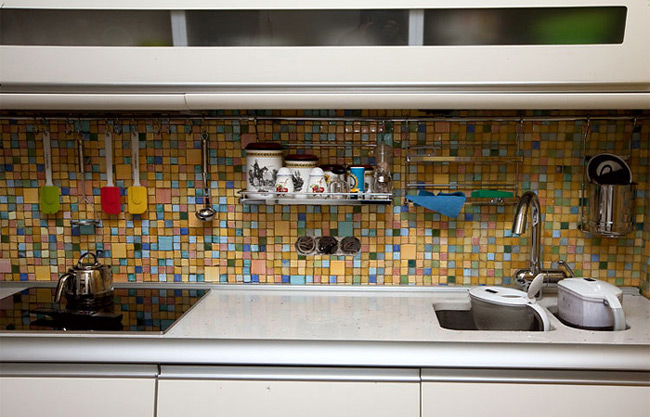
Pros :
- Design options. You can arrange more than five colors - the apron will organically fit into the interior;
- Solves the problem of curved surfaces (not to be confused with uneven walls). With the help of kitchen tiles, you can align the lines.
Minuses :
- Price. Mosaic apron is more expensive than tiled. The cost of installation work and additional materials is also high;
- Numerous seams, especially from light grout, will absorb water and grease over time and will look ugly.
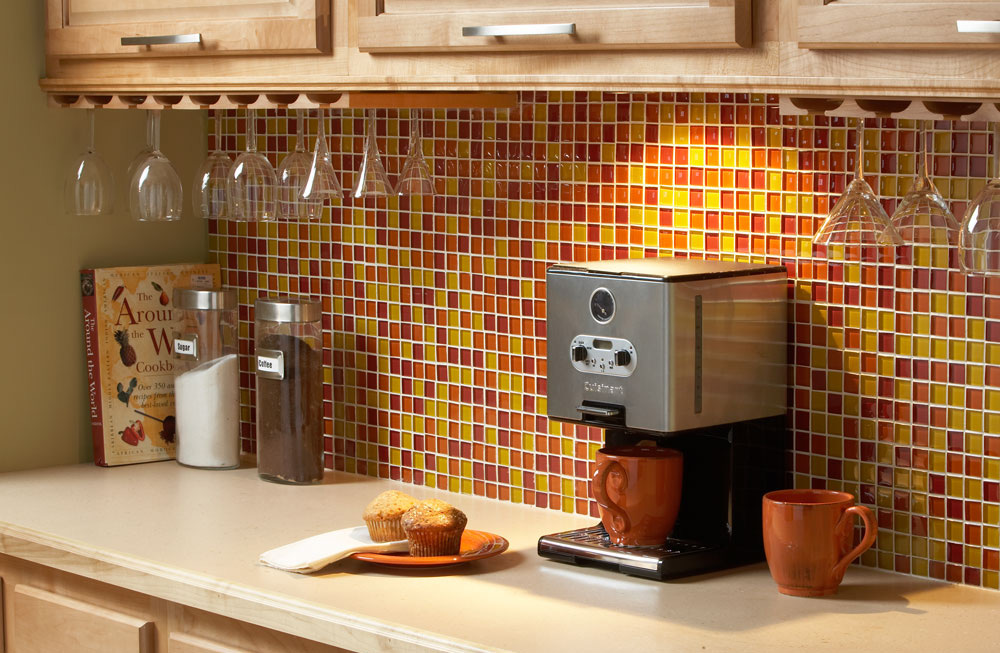
Choose a quality epoxy grout so that the seams with tiles looked good.
How to choose the right tile for finishing the apron
When choosing kitchen tiles, you should focus on the size of the kitchen itself, the color of the kitchen set and walls.
Stage 1. The size of the kitchen, backsplash and tiles
You can trim part of the wall - above the stove and. Then the apron will protect against fat, steam, water, and less materials will be needed. If you want to completely close the space between the workplace and the upper cabinets, add a panel or order digital printing - mark out a whole composition on the apron.
The size of the tiles themselves is important. In a small kitchen, it is impractical to choose large squares. It should be in harmony with the area of \u200b\u200bthe kitchen, the headset. Small 10x10 squares or 7x10 "bricks" are good.
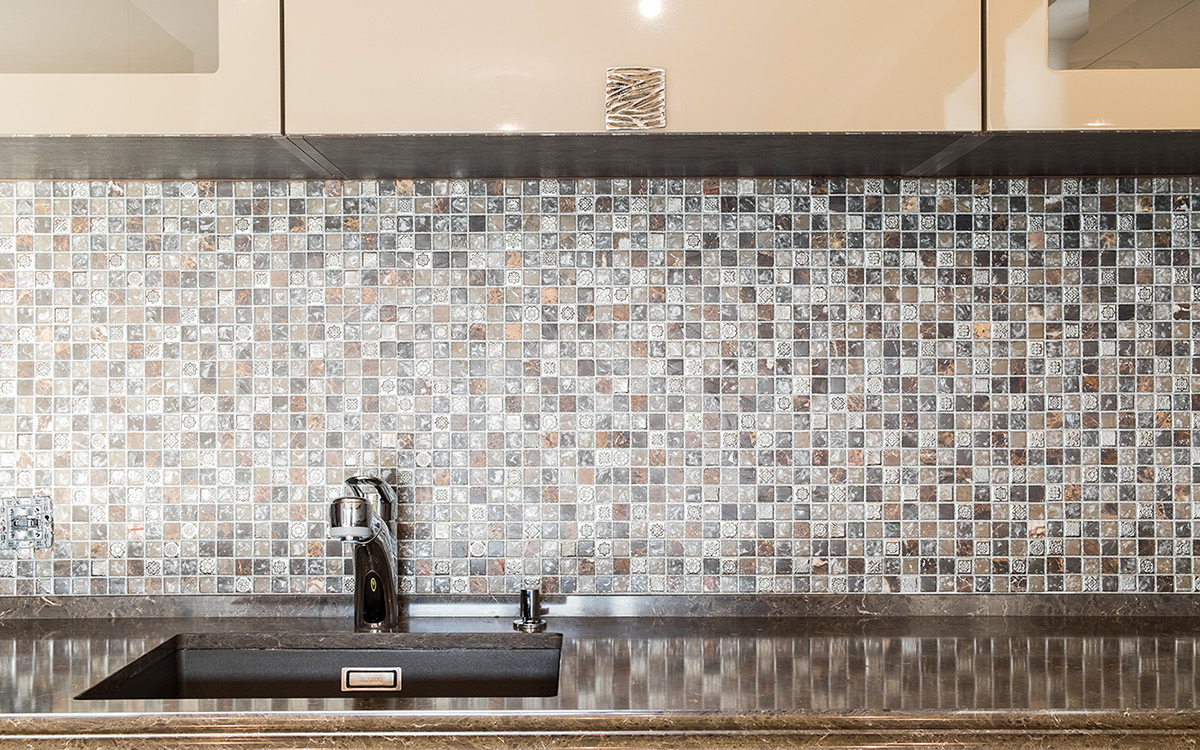
Dimensions of mosaic tiles: optimal - 2.5 by 2.5, at the same time the most expensive option. To save money, you can use ceramic tiles with a mosaic pattern, but the apron will look different.
Squares, rectangles with one side larger than 20 cm are not advisable to use for finishing the apron. The apron itself is rarely higher than 60 cm, so three large plates placed in a limited space will lose all decorative effect. And if one of them has to be cut off, the material will be damaged.
Stage 2. Tile kitchen apron - color and tone
White
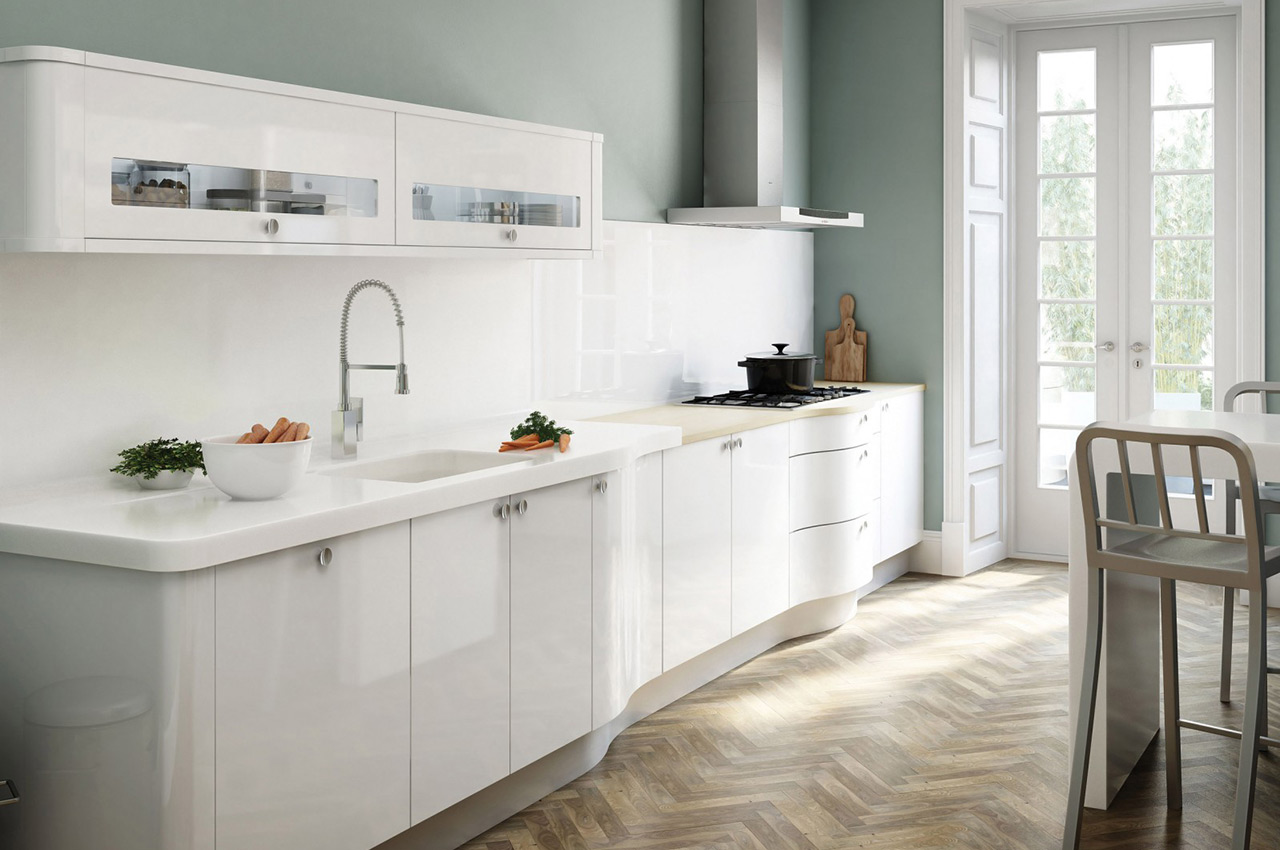
- universal choice, suitable for almost any headset. However, easily soiled, if the tile is glossy, stains are possible when wiping.
By choosing White color, you can easily dilute it with both individual tiles with drawings and whole images.
Beige-cream gamma (peach, pinkish, cream, light brown, yellowish)
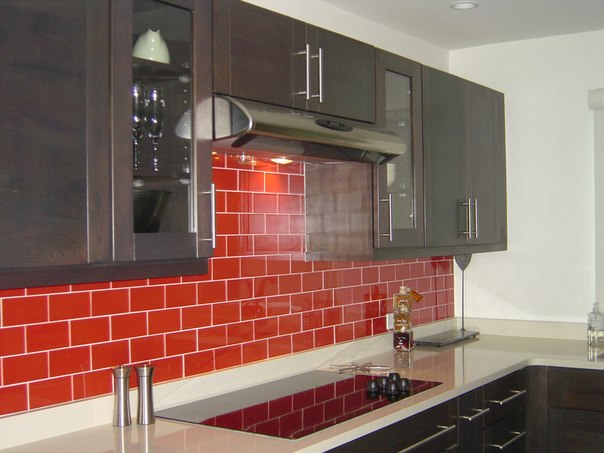
Matches dark colored cabinets as a contrast. Such a tile apron goes well with similar tones in kitchen set. Suitable as a base under the panel.
Vibrant color palettes
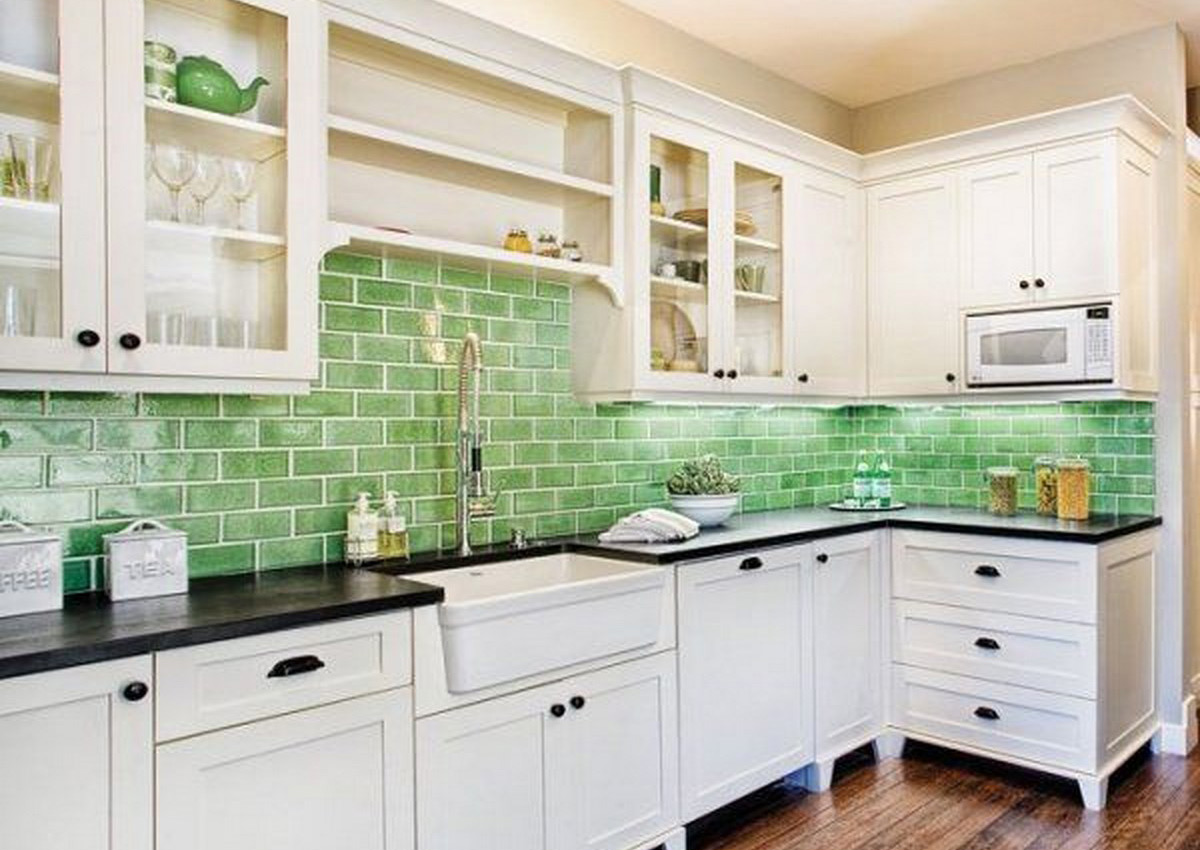
You can focus on one bright color, combining with a similar element in the kitchen - a countertop, a vase, front panels on furniture. A multi-color mosaic will look especially beautiful on a small section of the wall with a frame of white (cream) tiles.
Stage 3. Quality
When viewing tile samples in the showroom, pay attention to the markings. The packaging must be marked with the mark "A" or "AA". Require the order to be formed from one batch - the tiles for the kitchen on the apron should not differ in tone.
In order not to have to re-order the missing number of tiles, carefully measure the wall. Please note that the apron should go a couple of centimeters under the cabinets from above and below. Invest in skirting boards and corners - the kitchen will look neat.
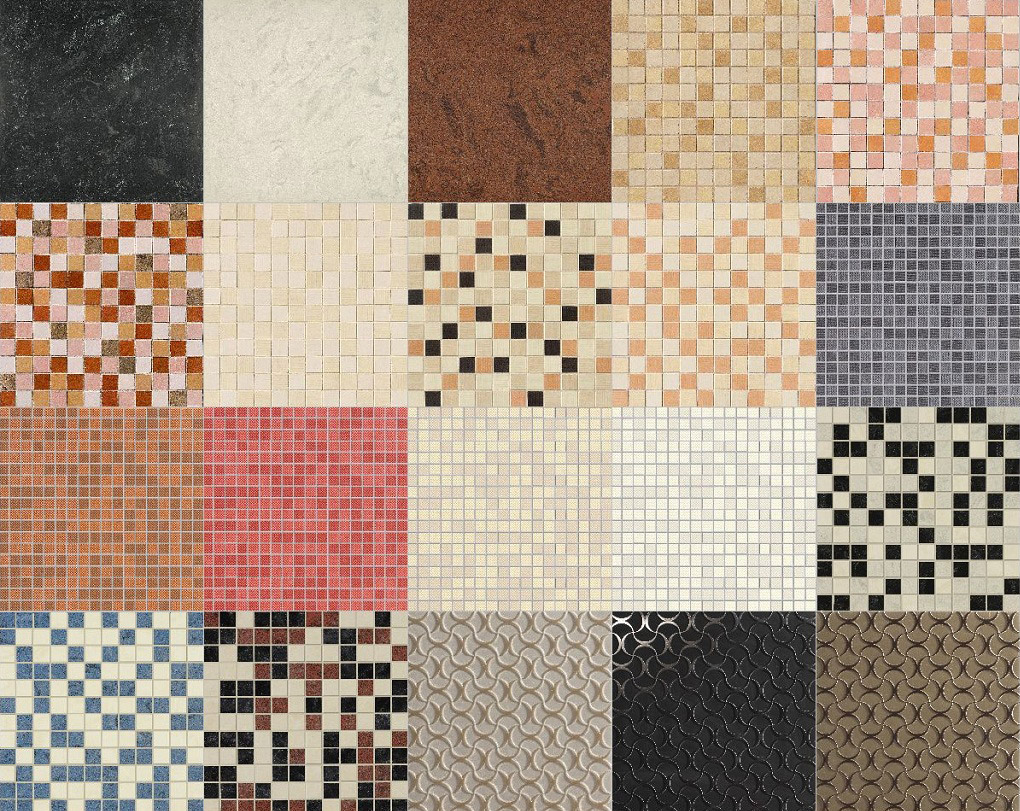
Manufacturers usually put out a lot of samples to evaluate the quality of tiles on the backsplash. Best Reviews(and high prices) from Polish, Spanish, Italian suppliers. More economical options ceramic tiles for the kitchen with decent quality can be selected from domestic firms. If the budget is limited, omniscient Chinese manufacturers will come to the rescue.
When accepting the goods, open all packages completely - check for chips at the corners of the tile, cracks, roughness.
Stage 4. Quantification
Also think about how you will be styling. Options:
- In the classical way (one under the second);
- With a shift;
- Diagonally;
- in a checkerboard pattern;
- Chaotic;
- Forming a pattern, thereby.

Laying tiles on a kitchen apron diagonally. The size of the tiles is 10 by 10 cm.
With the classic version of laying tiles in the calculation field, throw one or two packages on top. If you are planning a complex placement - 3-4 packs.
Summing up
The ideal backsplash kitchen tile is small, smooth, not textured. One tone, size. When planning the budget for the purchase of backsplash tiles, add the cost of preparing the walls, additional installation materials, and the services of a master.
In this article:
Let's take a closer look at the pros and possible options for laying tiles in the work area.
Benefits of tiles
So, tiles for the kitchen have many practical advantages:
- Excellent moisture resistance- something is constantly being washed and boiled in the kitchen, water flies in different directions, but all this is not for the tile!
- Immunity to temperature changes- being a product that has gone through ultra-high temperatures, tiles are not afraid of any thermal stress.
- Does not absorb grease and dyes- this is extremely important, because the kitchen work area must have such quality.
- Good strength and durability- with high-quality installation and normal operation, it can last for decades.
- Wide range of possible colors- in the catalogs of manufacturers there are thousands of different models absolutely for every taste and in any price category.
- Looks good in combination with other finishing materials: natural stone, brick, wood.
- Relative ease of installation.
If you are interested in domestic tiles, we recommend that you look at where their official product catalogs are also presented.
Classic layout
This type of cladding working area can be found in every second kitchen in our country.
Notable here is the laying out of plain and medium-sized tiles using standard laying techniques. Such an apron looks simple and reliable, and is also the most budgetary and versatile option.
Such a layout requires a basic ability to handle tiles, as well as a clear understanding of the scope of work. Here are some illustrative photo examples and solutions.
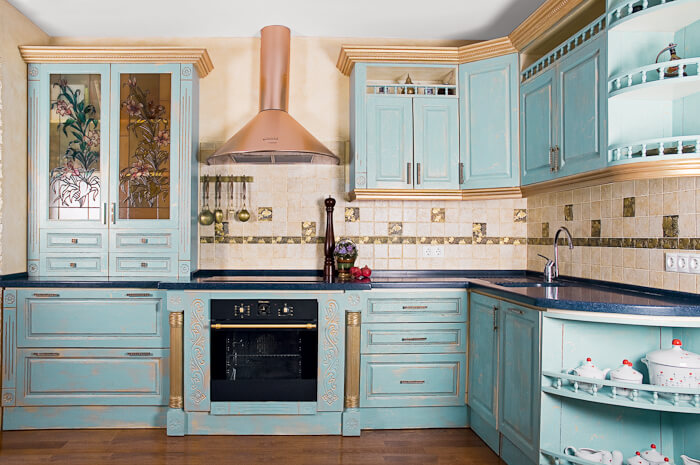
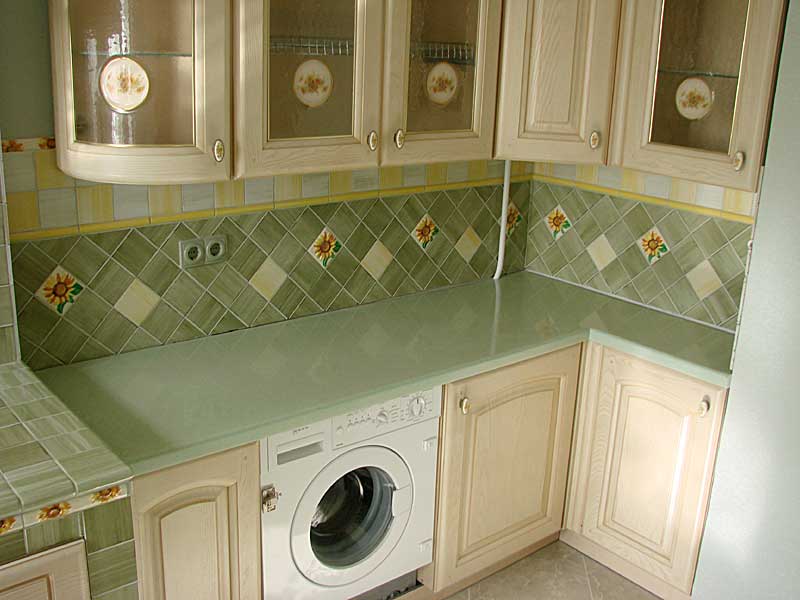
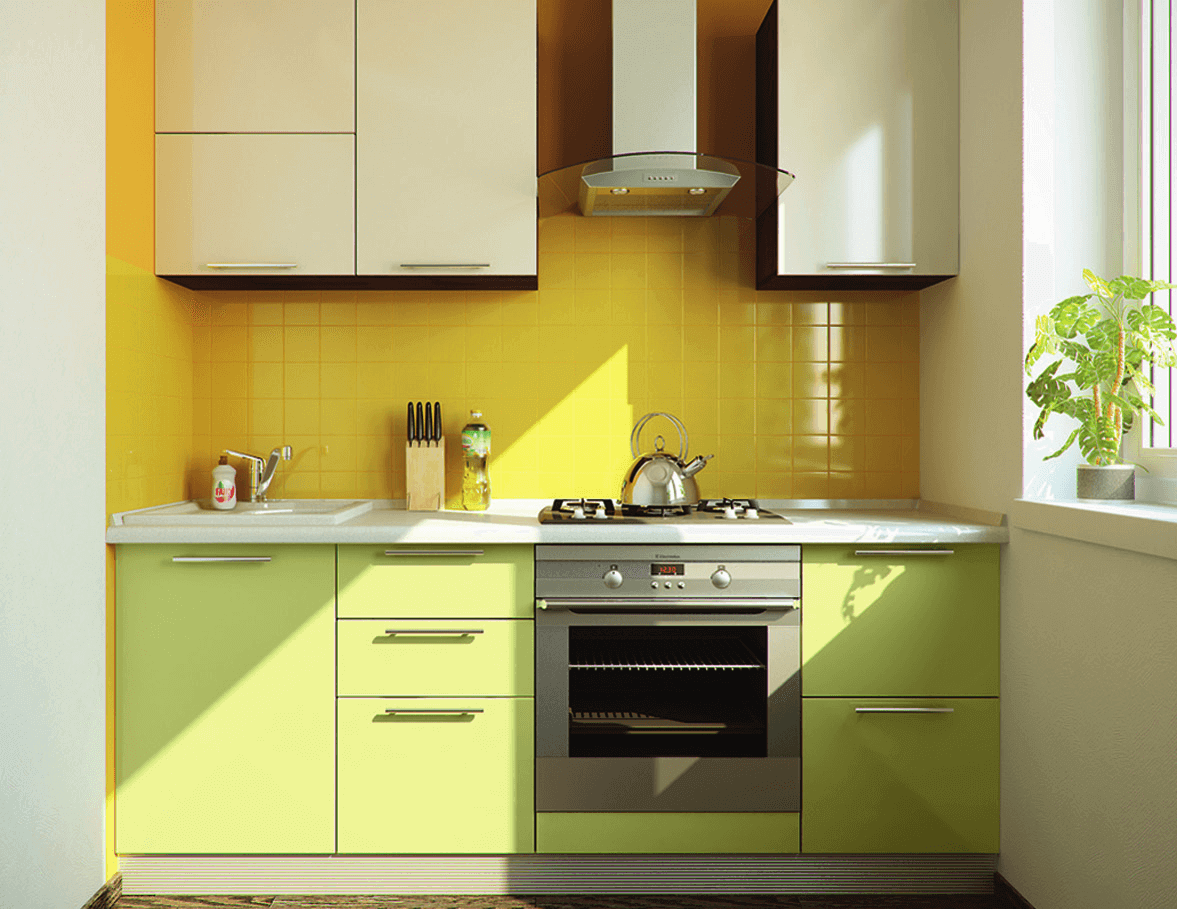
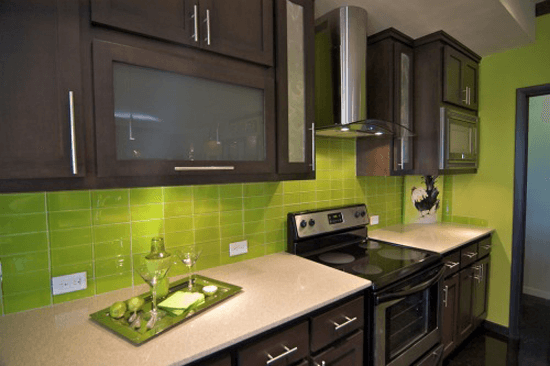
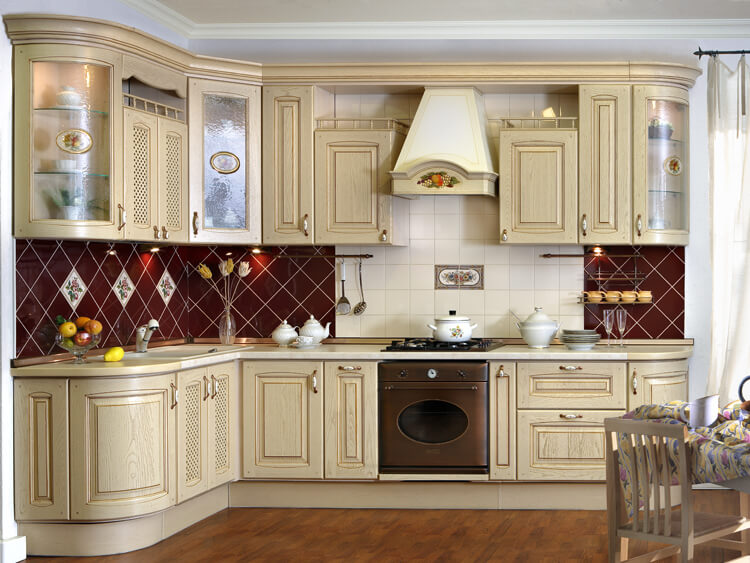
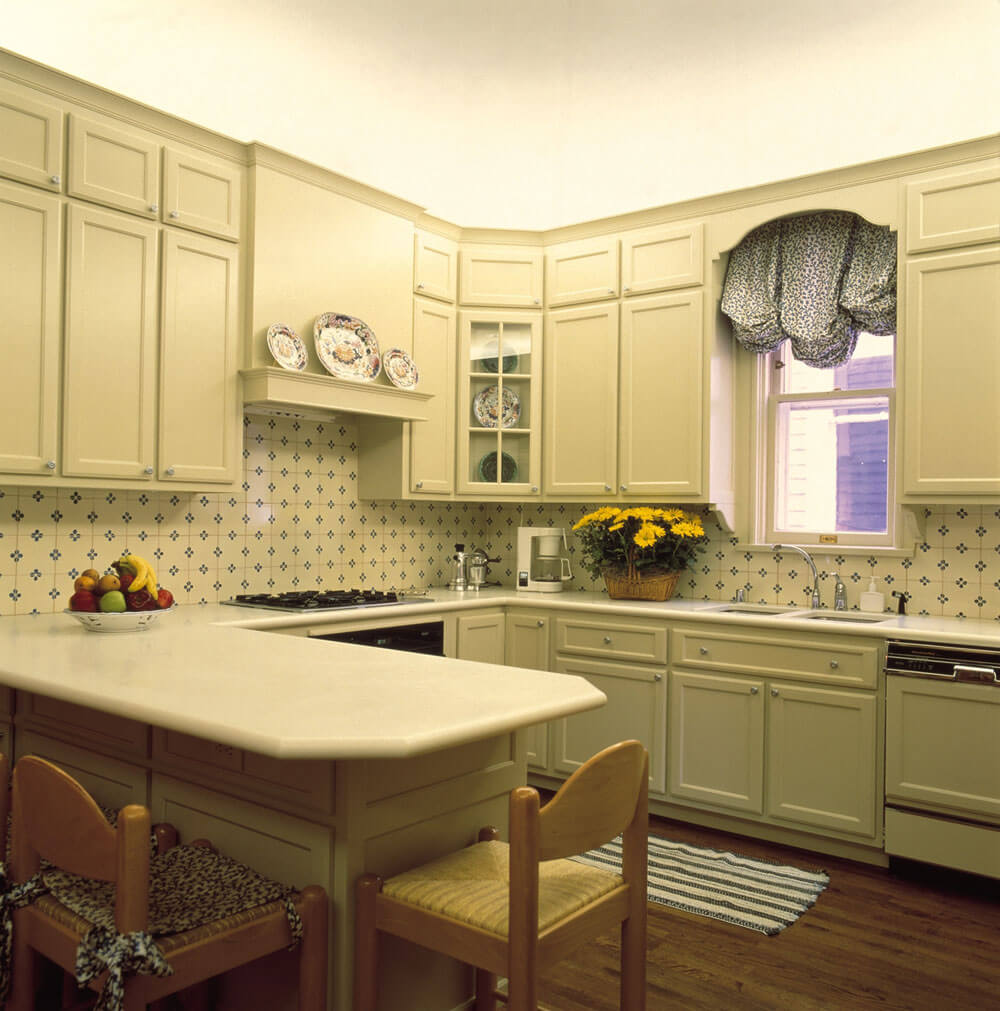
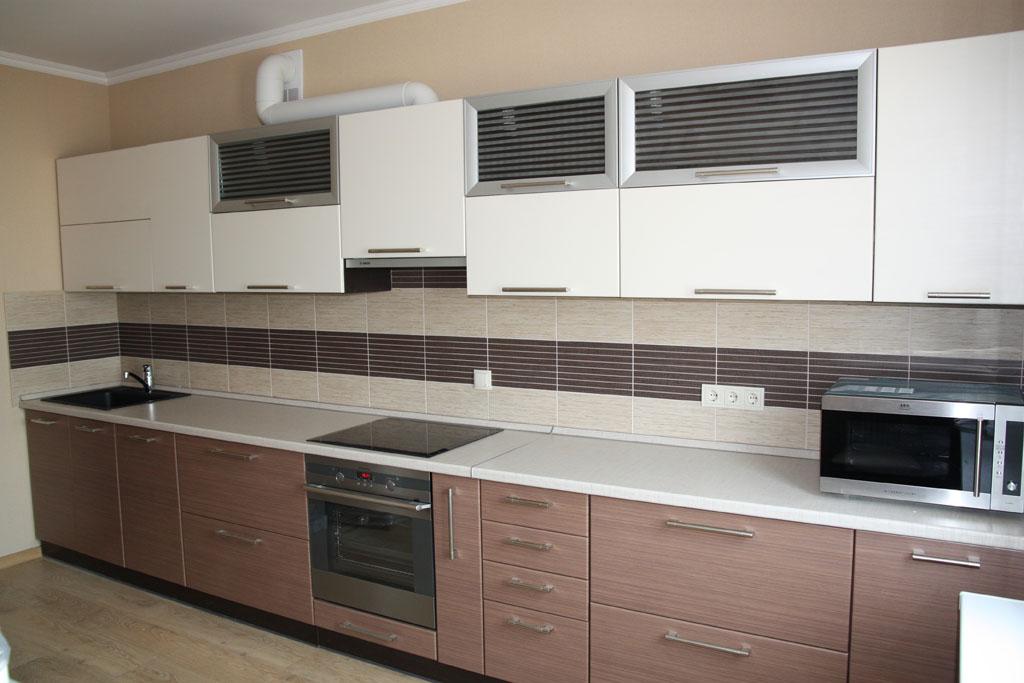

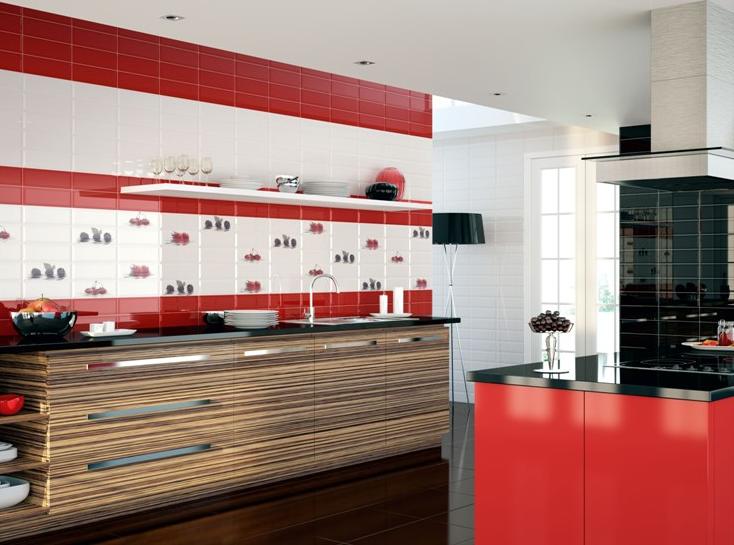
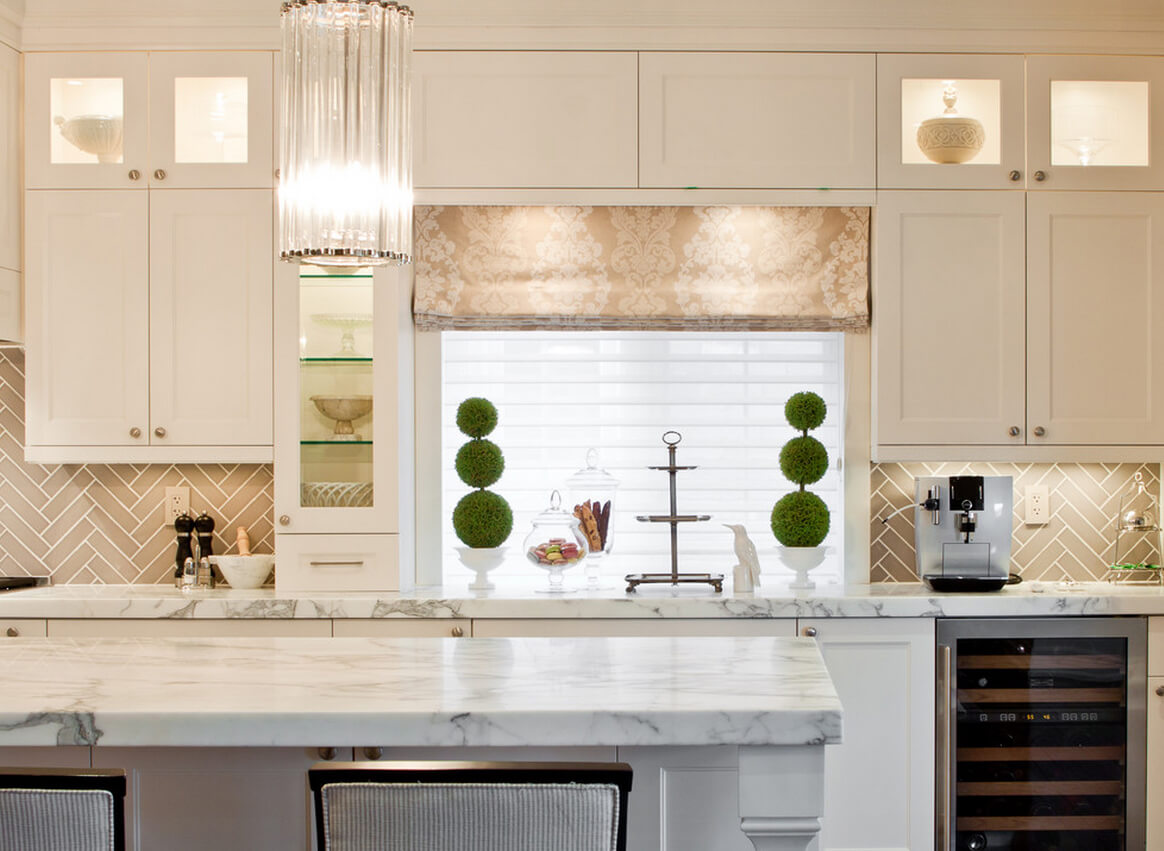
As you can see, even with the simplest layout and without fanciful tiles, the apron looks beautiful and reliable. Let's see how you can make a working wall using more original and difficult to install types of ceramic tiles.
Mosaic

This type is a ceramic or glass small tiles. Due to its small size, mosaics can be used to lay out a wide variety of patterns and ornaments.
An apron designed in such a way great for small kitchens or to decorate a large section of the work area.
The result of laying out such a tile is pleasing to the eye. At the same time, a classic, but at the same time very modern and original pattern is created from decorative faceted bricks, which has a pleasant aesthetic effect.
Laying this type of tile also requires professional skills, especially when it comes to forming external and internal corners.
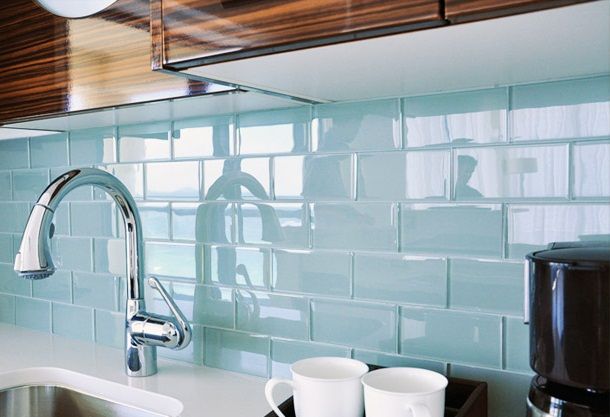
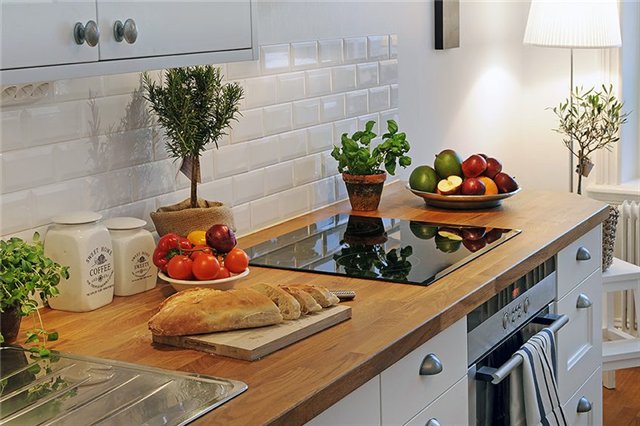


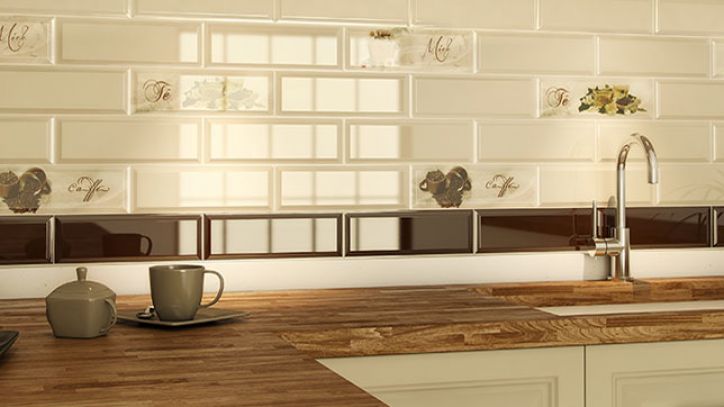
The most common is the monophonic "boar". But there are examples with various kinds of inscriptions and patterns.
"Boar" Best suited for small work areas in small and medium sized kitchens.
panel
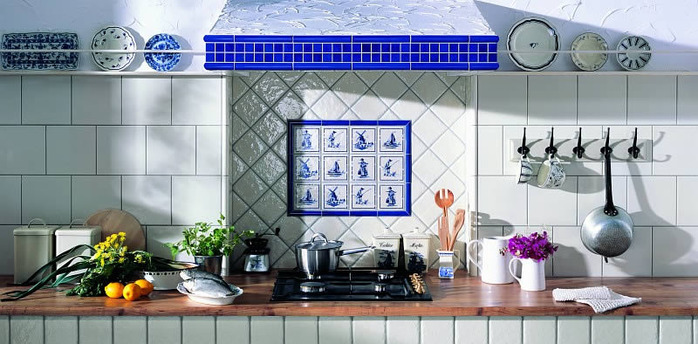
Another example of laying out an apron for the kitchen with small tiles.
The main feature of this style is the formation of a central or several compositions, drawings, images. The panel can be laid out both with ordinary tiles and with special mosaics, as well as by arranging different types tiles.
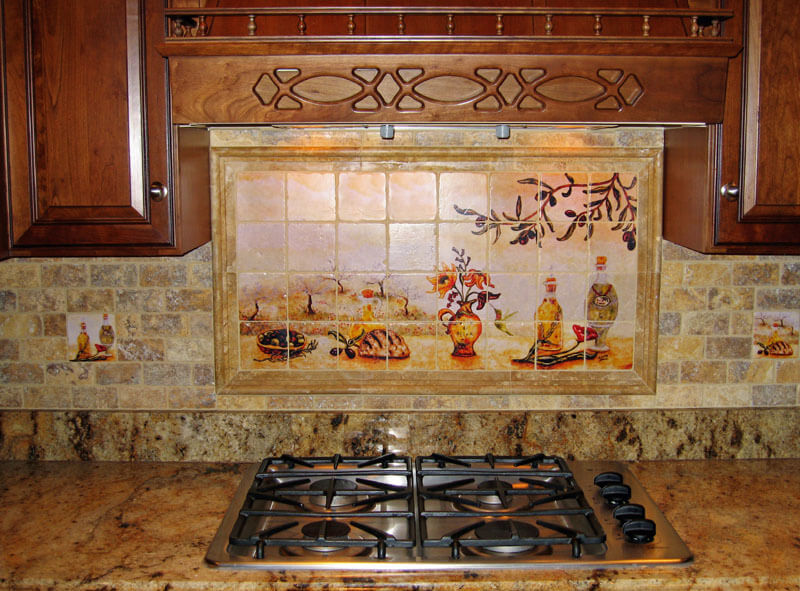

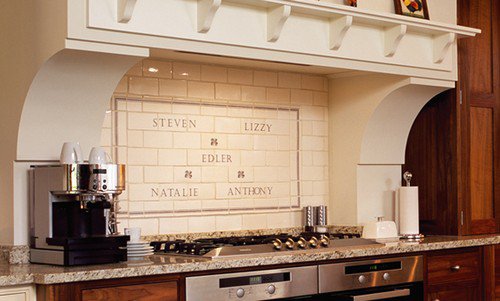

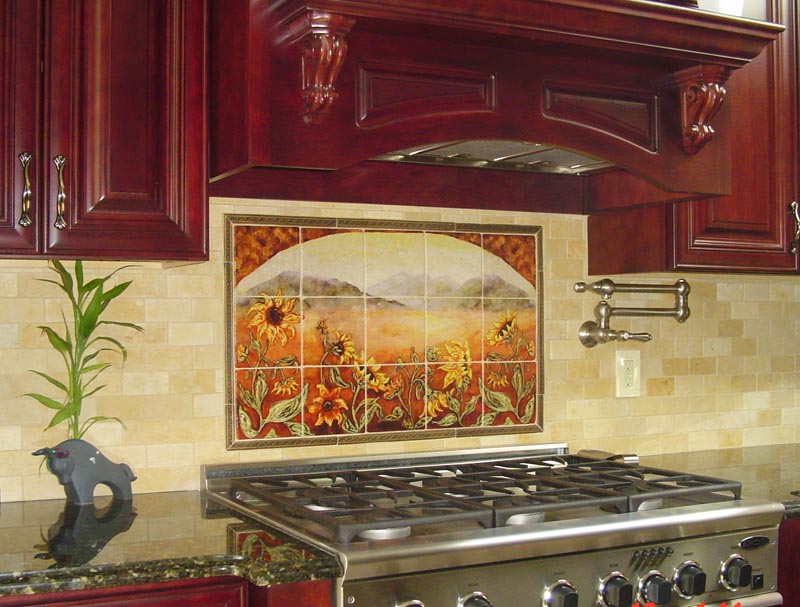
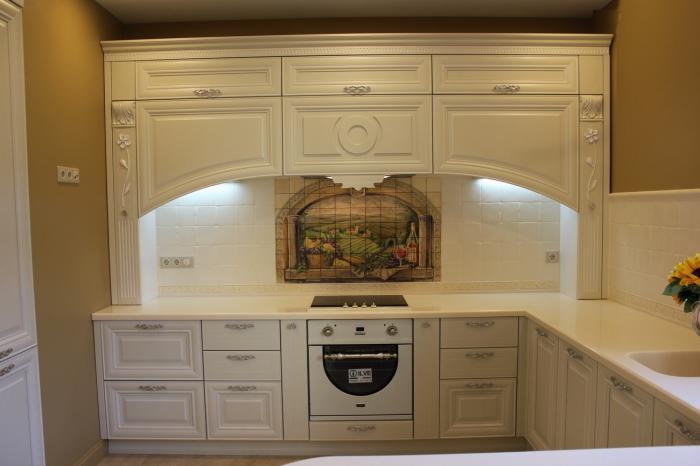

Common ornaments are images of animals, fruits, landscapes.
As can be seen from the presented photos, the main drawing of the kitchen panel, as a rule, is laid out under the hood. It looks very nice if the hood is made in the form of a specially laid out or cut out box.
Fashion trends
Manufacturers of ceramic tiles for the kitchen regularly update their product catalogs and can offer you other equally interesting color and figure solutions.
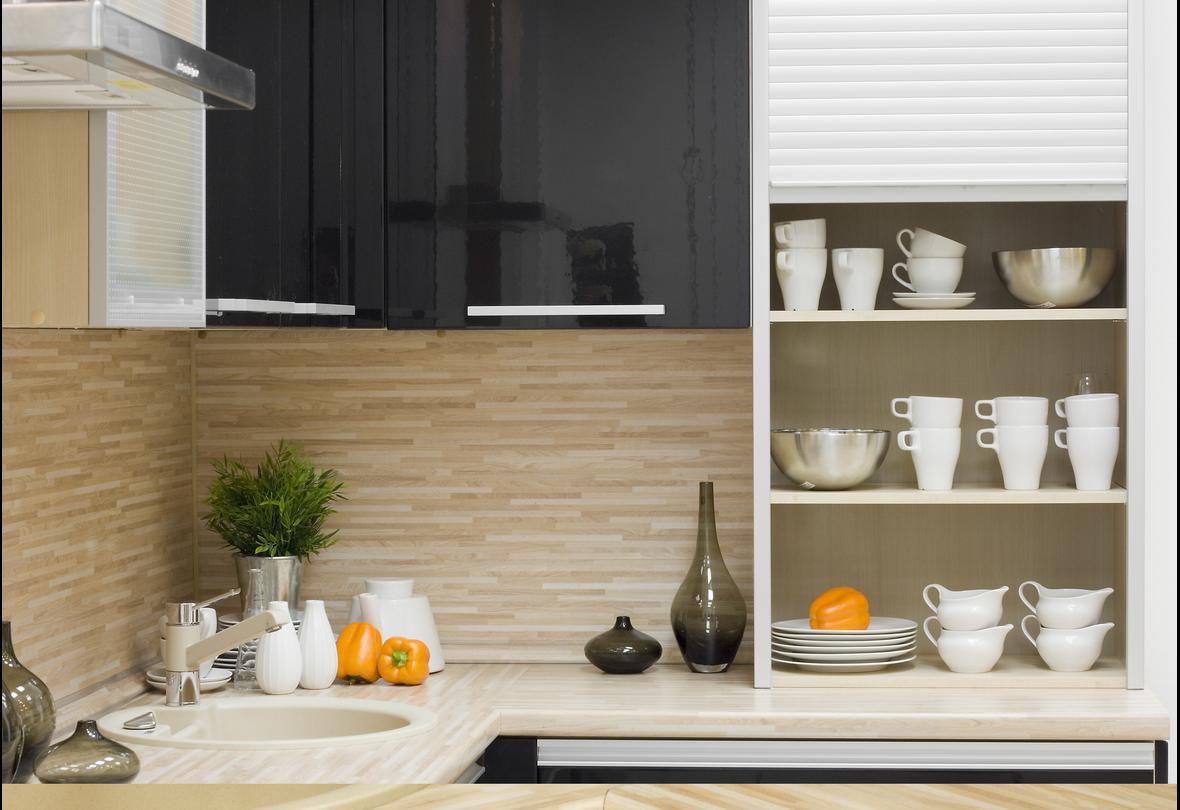
For example, imitation under a stone or a brick.
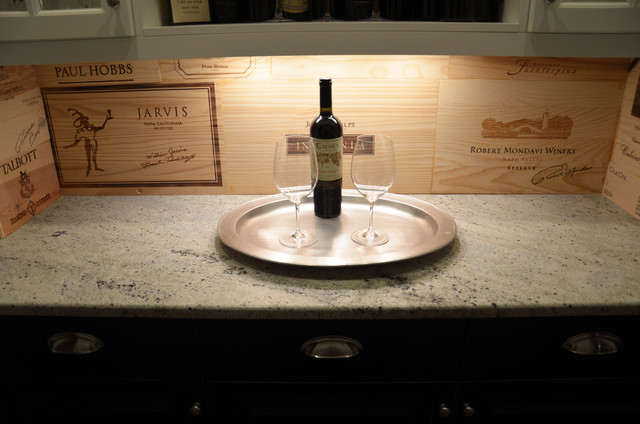
If you like the texture of wood, that's not a problem either.
As already mentioned above, today the most fashionable among tile aprons are work areas made of "boar".
More about new trends in the interior design of the kitchen can be found in our review.
When you come to a ceramic tile salon or look at its assortment on the Internet, you can miss a few important points. This is especially true for people who are facing their first renovation.
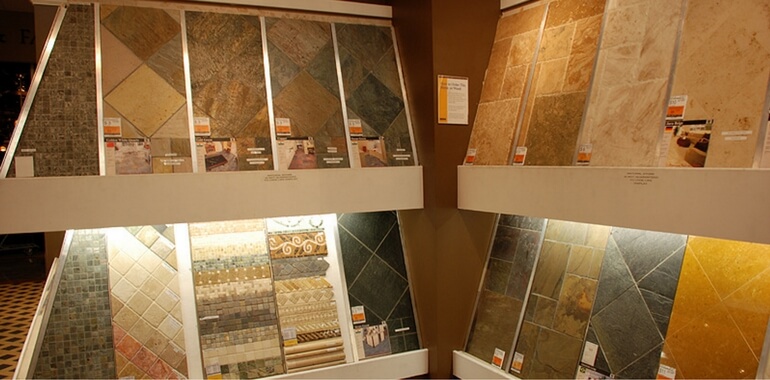
We will bring several practical advice , which it is desirable to consider before and after buying a tile:
- 1 Be sure to order a little more than the calculated area. There is a rule: what bigger size tile, the more trim will be, and vice versa. This is especially true for laying tiles diagonally. Order 8-10% more and you don't have to worry about the potential hassle of repurchasing.
- 2 Remember that if you need to buy additional tiles, you may encounter two main problems.
First, this is the lack of the model you need or the extremely long waiting time for its delivery from abroad.
Secondly, you can buy the ceramic tile you need, but it will already be of a different production series and may differ in color by some micro tone. This can be critical, especially in large areas.
- 3 The smaller the tile, the more expensive the installation work. Laying a mosaic or panel will cost 3-5 times more than working with larger tiles.
- 4 Quality checking- carefully inspect the batch of tiles that was delivered to you for the absence of chips, cracks, abrasions, manufacturing defects.
- 5 Select tiles by looking at photos in catalogs, brochures or on the Internet, but order only after you see it live. This is due to the fact that the colors of printing tile images in magazines almost always differ from its natural, real color.
- 6 How less kitchen, the smaller should be the tiles on the apron. One of the golden rules for designing a work area.
- 7 Consider the type of lighting- the same tile will look different in warm and cold light. Try to persuade the seller to provide you with bail samples for a few hours. In large ceramics salons, this is often practiced.
The variety of ceramic tiles in the kitchen for the backsplash is very wide and its range is constantly expanding. We hope that the photos presented above, you were able to see the possible options for how to arrange a working area and make a decision about arranging your own kitchen.




















